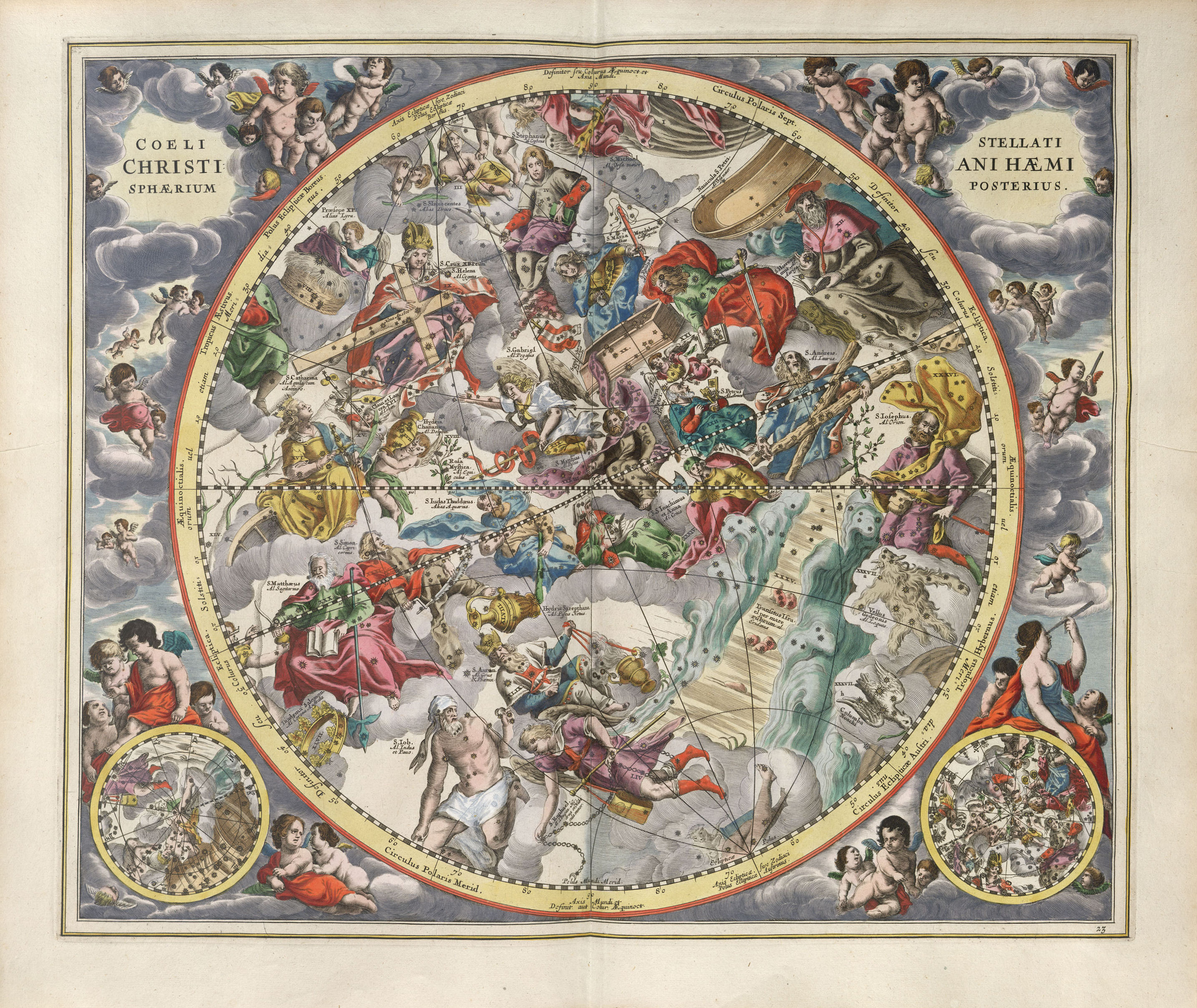Harmonia Macrocosmica — History’s Most Beautiful Star Maps
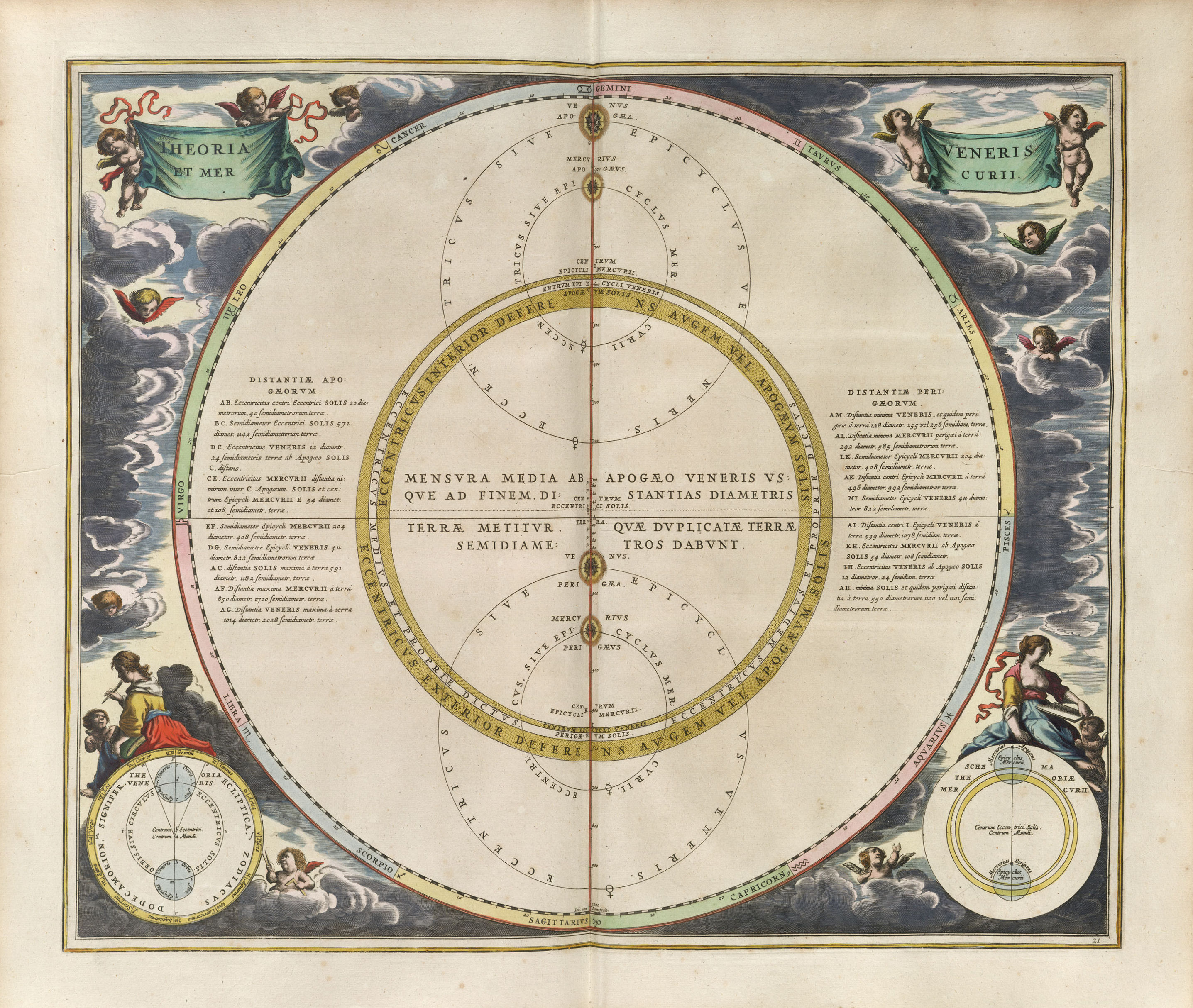
The Harmonia Macrocosmica is a star atlas written by Andreas Cellarius and published in 1660 by Johannes Janssonius.
The Harmonia Macrocosmica is a star atlas written by Andreas Cellarius and published in 1660 by Johannes Janssonius.
The first part of the atlas contains copper plate prints depicting the world systems of Claudius Ptolemy, Nicolaus Copernicus and Tycho Brahe. At the end are star maps of the classical and Christian constellations, the latter ones as introduced by Julius Schiller in his Coelum stellatum christianum of 1627. The translations are by dr. Henry A.I. Stadhouders (Theological Institute, University of Utrecht).
In the foreword to his Chronologica, Gerard Mercator stated the intention to publish an atlas which would cover everything of the then-known cosmos, geography and history of the earth. During his life, Mercator published five volumes of his atlas, the last one being published by his son Rumold. After Mercator’s death, the Amsterdam cartographerJohannes Janssonius took over the project. He and fellow-cartographer Hendricus Hondius published their Novus Atlas in 1636, which featured over 320 maps in four languages. In 1660, Andreas Cellarius’ Harmonia Macrocosmica was published as the seventh volume of the project. With the final addition of a volume describing the cities of the world from 1657, the project was finally completed.
Of the various engravers and authors who worked on the plates of the atlas, only two have signed their work. The frontispiece of the atlas was created by Frederik Hendrik van den Hove and ten other plates were engraved by Johannes van Loon. Moreover, all the designs of the classical constellations were taken from the ones created by Jan Pieterszoon Saenredam.
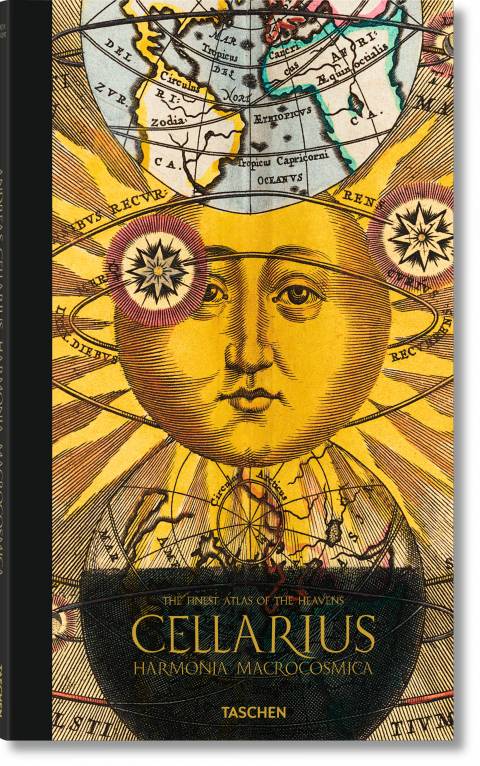
Andreas Cellarius Tashen Books
The translations are by dr. Henry A.I. Stadhouders (Theological Institute, University of Utrecht).
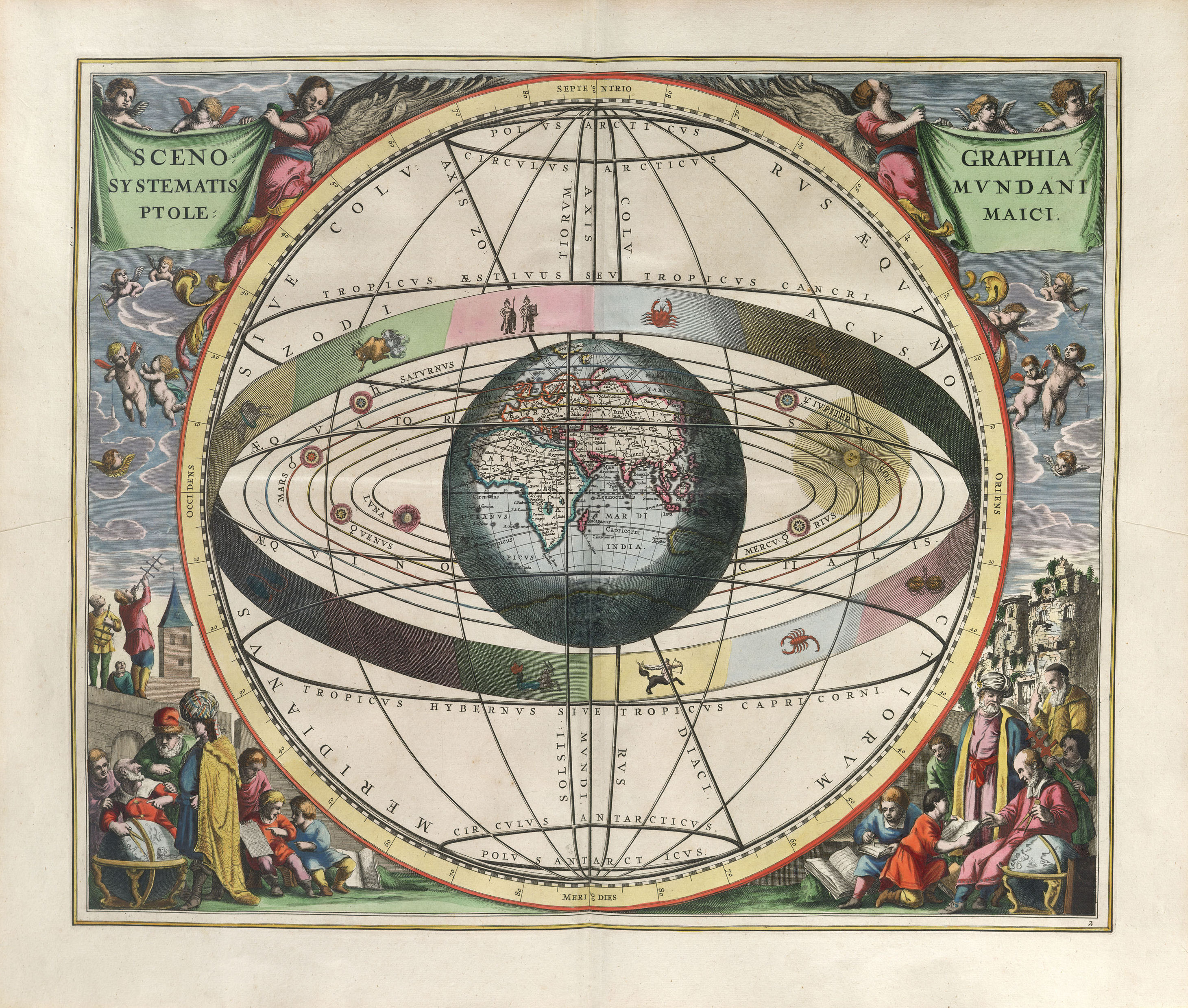
SCENOGRAPHIA SYSTEMATIS MVNDANI PTOLEMAICI – Scenography of the Ptolemaic cosmography.
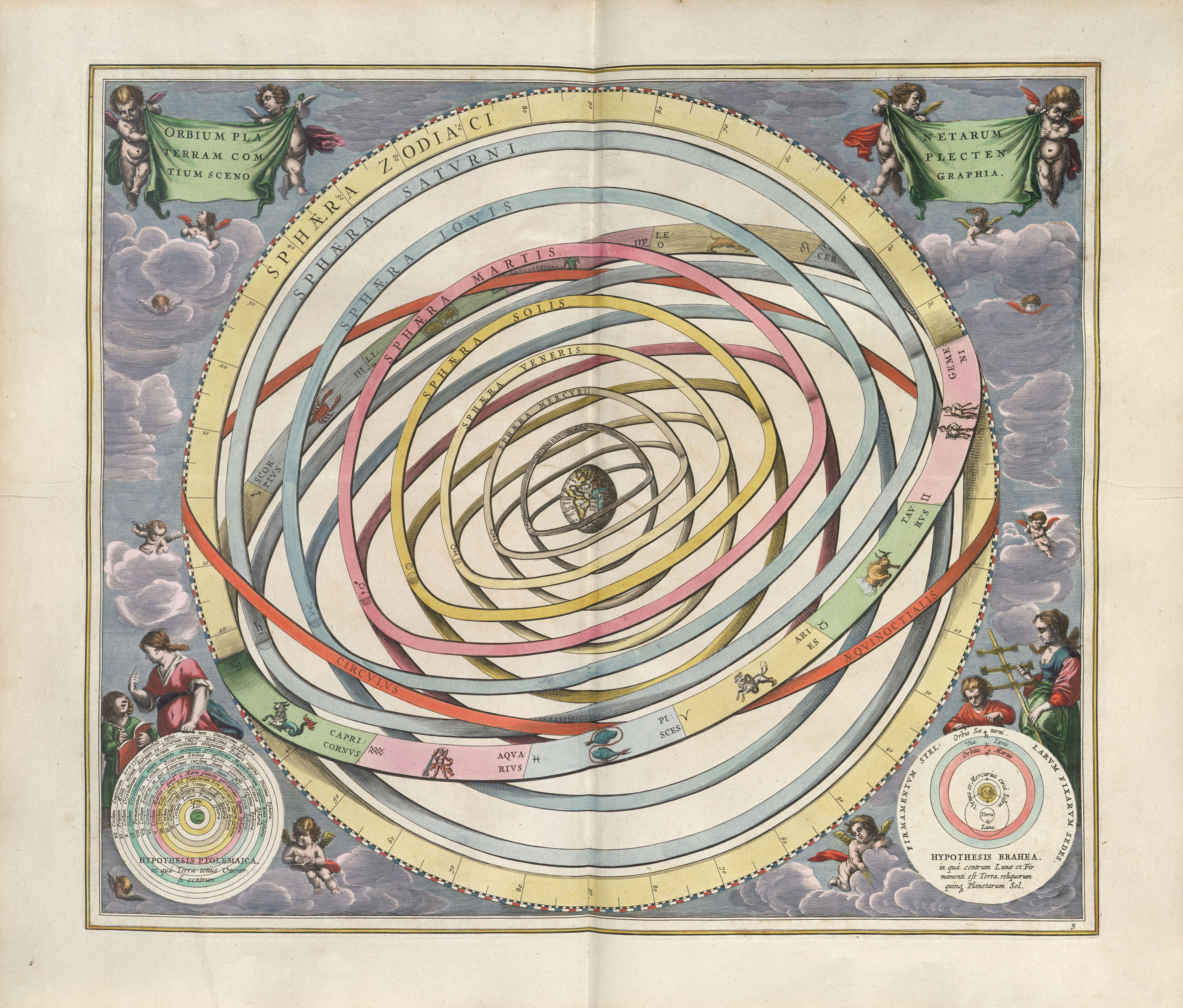
ORBIUM PLANETARUM TERRAM COMPLECTENTIUM SCENOGRAPHIA – Scenography of the planetary orbits encompassing the Earth.
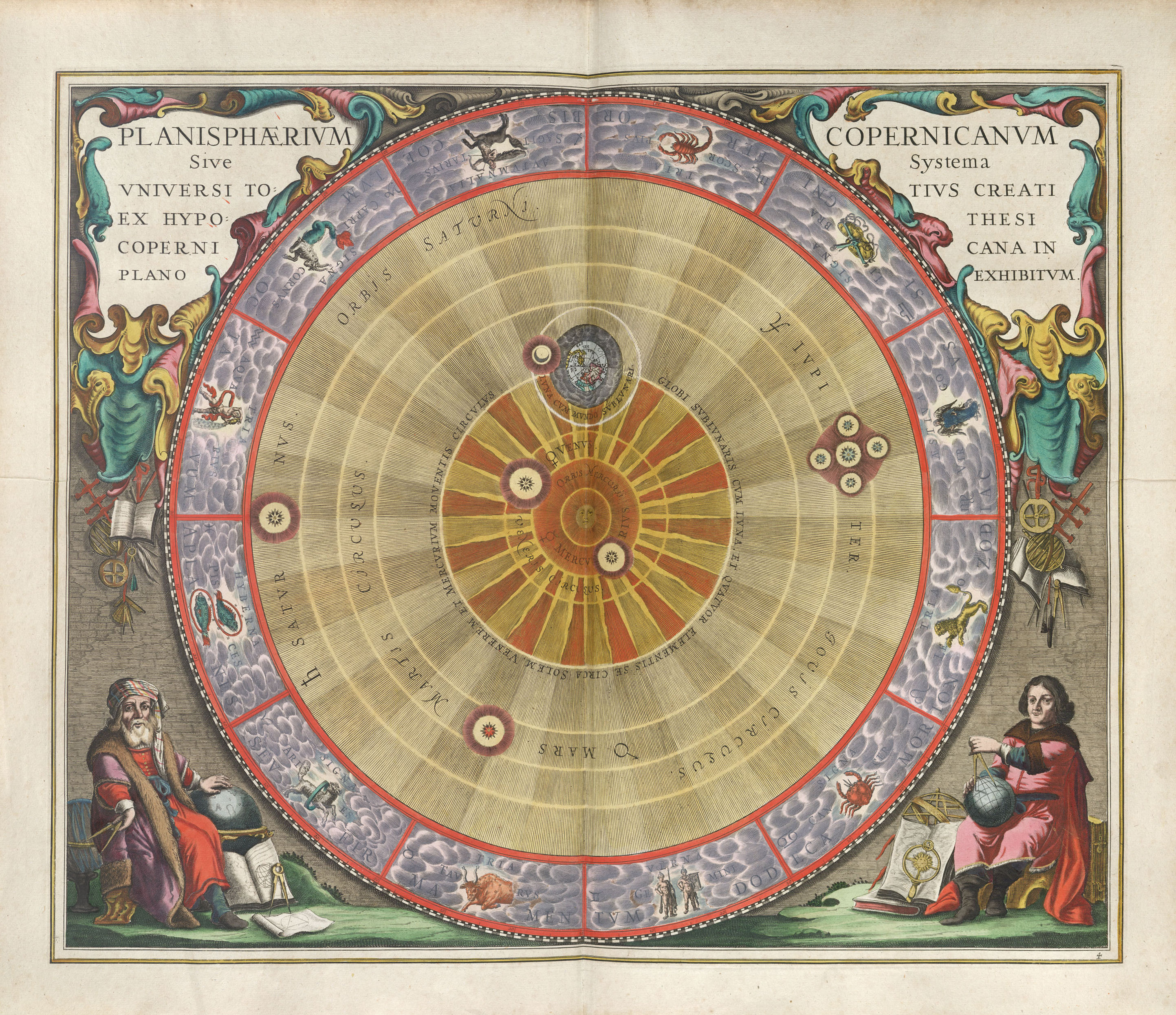
PLANISPHÆRIVM COPERNICANVM Sive Systema VNIVERSI TOTIVS CREATI EX HYPOTHESI COPERNICANA IN PLANO EXHIBITVM – The planisphere of Copernicus, or the system of the entire created universe according to the hypothesis of Copernicus exhibited in a planar view
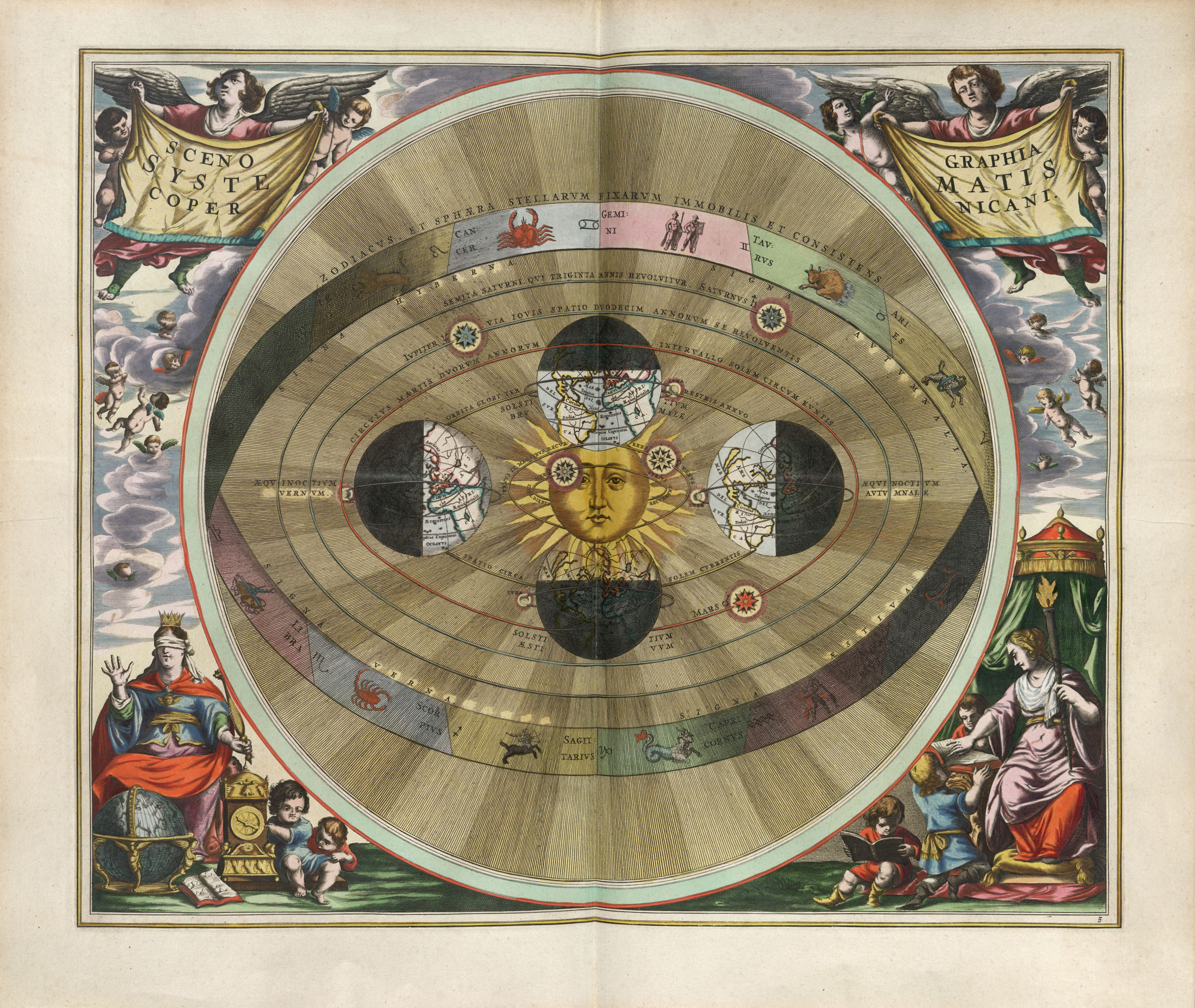
SCENOGRAPHIA SYSTEMATIS COPERNICANI – Scenography of the Copernican world system.
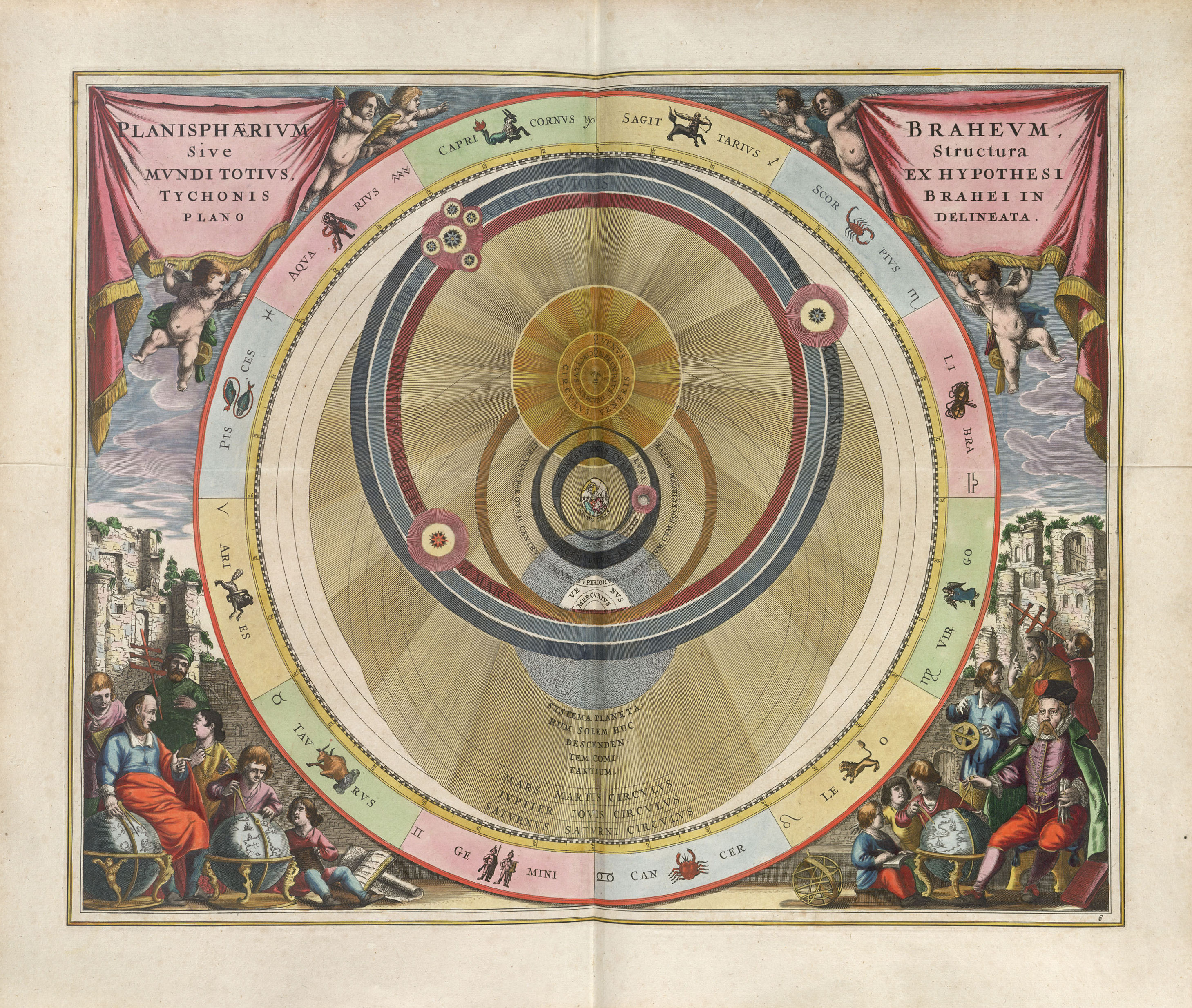
PLANISPHÆRIVM BRAHEVM, Sive Structura MVNDI TOTIVS, EX HYPOTHESI TYCHONIS BRAHEI IN PLANO DELINEATA – The planisphere of Brahe, or the structure of the universe following the hypothesis of Tycho Brahe drawn in a planar view.
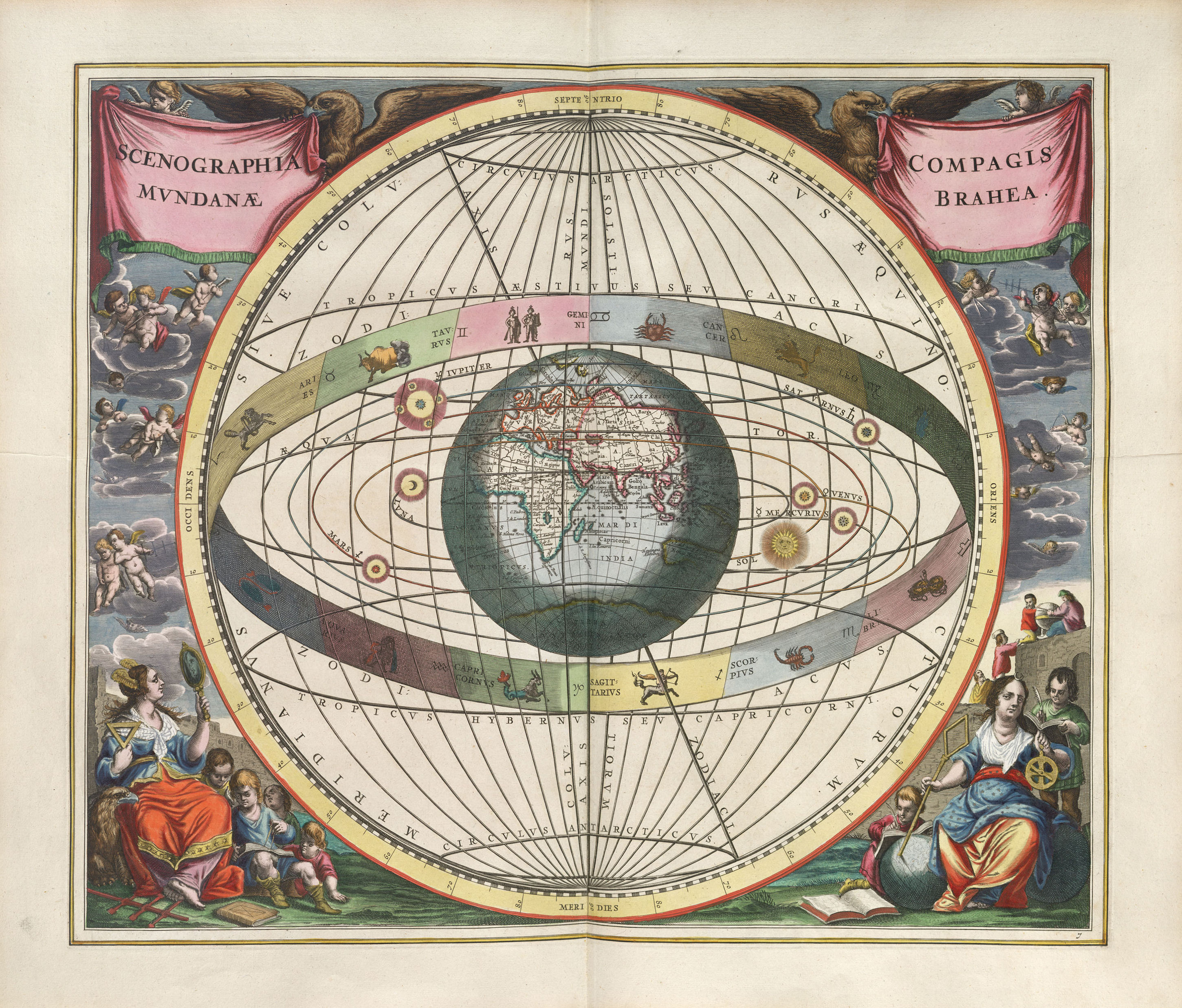
SCENOGRAPHIA COMPAGIS MVNDANÆ BRAHEA – Scenography of the world’s construction according to (Tycho) Brahe.
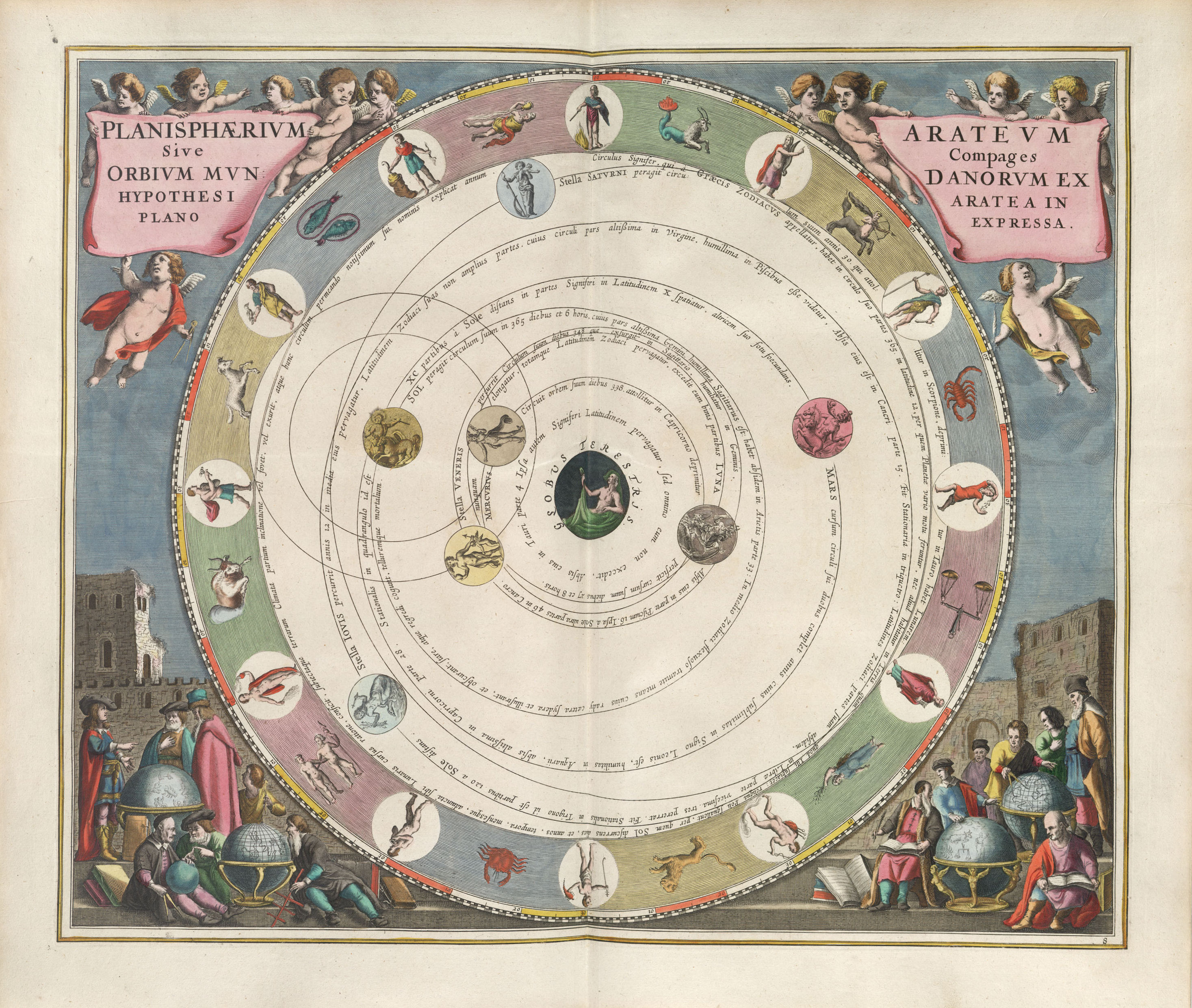
PLANISPHÆRIVM ARATEVM Sive Compages ORBIVM MVNDANORVM EX HYPOTHESI ARATEA IN PLANO EXPRESSA – The planisphere of Aratus, or the composition of the heavenly orbits following the hypothesis of Aratus expressed in a planar view.
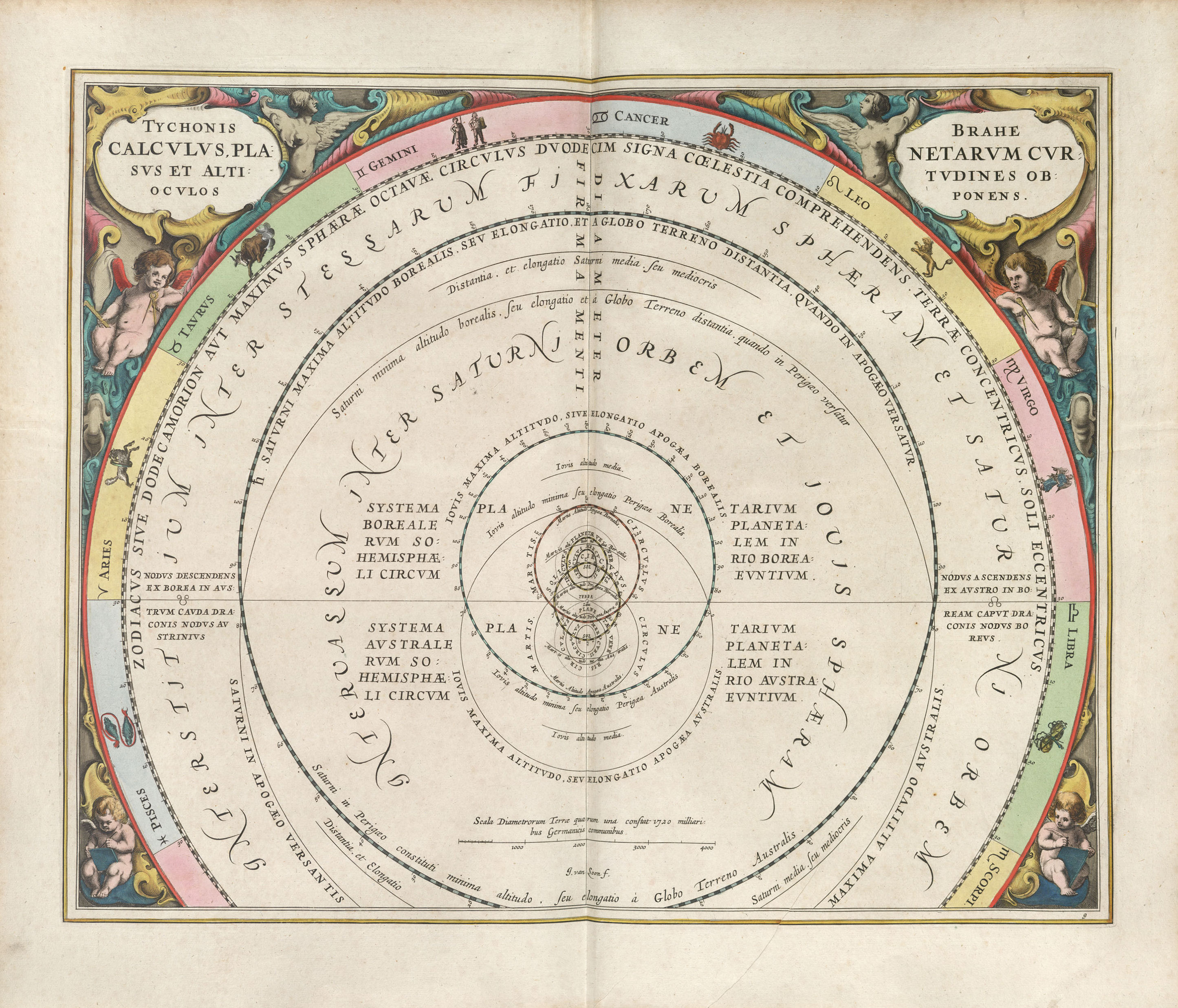
TYCHONIS BRAHE CALCVLVS, PLANETARVM CVRSVS ET ALTITVDINES OB OCVLOS PONENS – Tycho Brahe’s (method of) calculation pointing out the courses and altitudes (i.e. distances) of the planets.
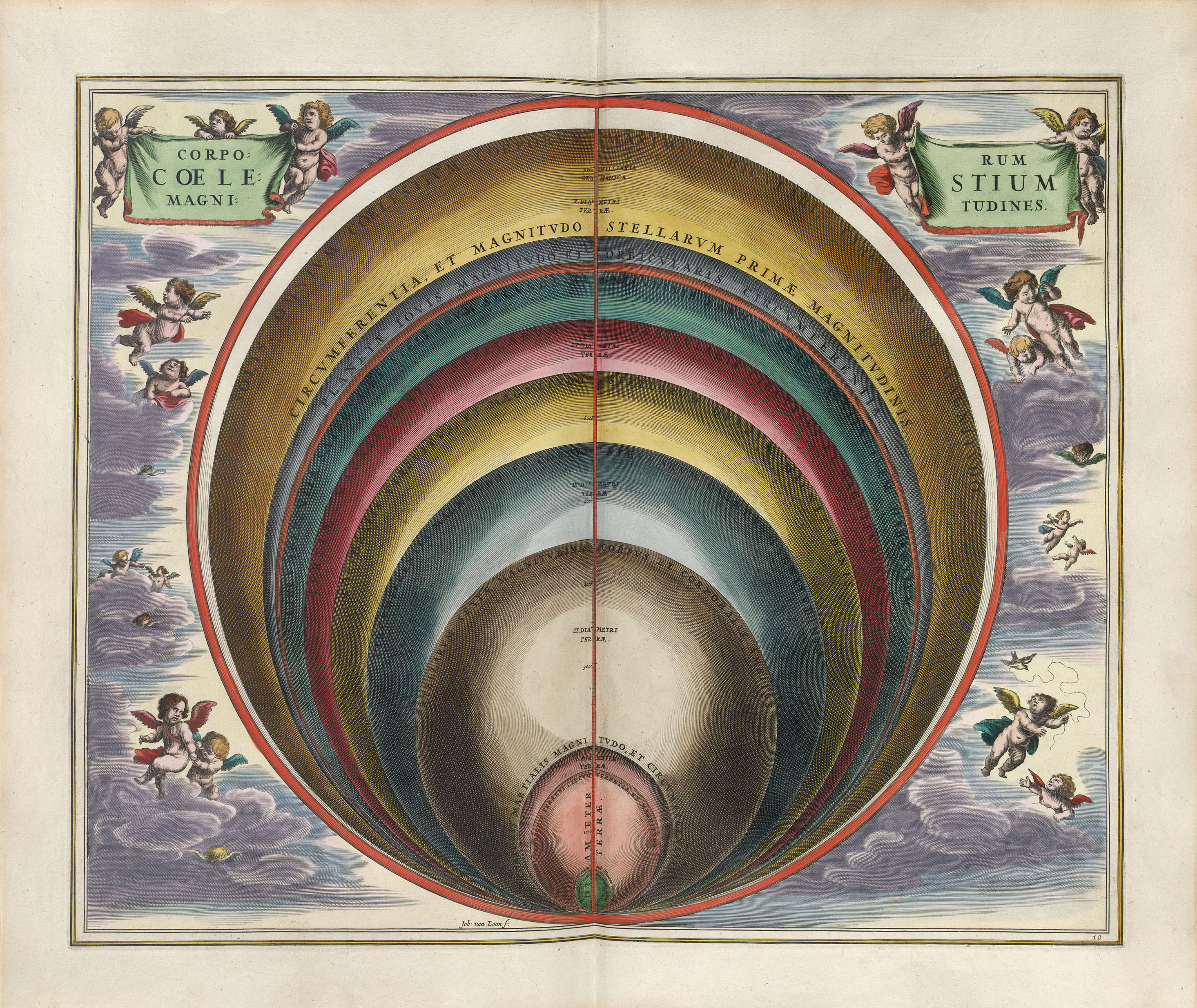
TYCHONIS BRAHE CALCVLVS, PLANETARVM CVRSVS ET ALTITVDINES OB OCVLOS PONENS – Tycho Brahe’s (method of) calculation pointing out the courses and altitudes (i.e. distances) of the planets.
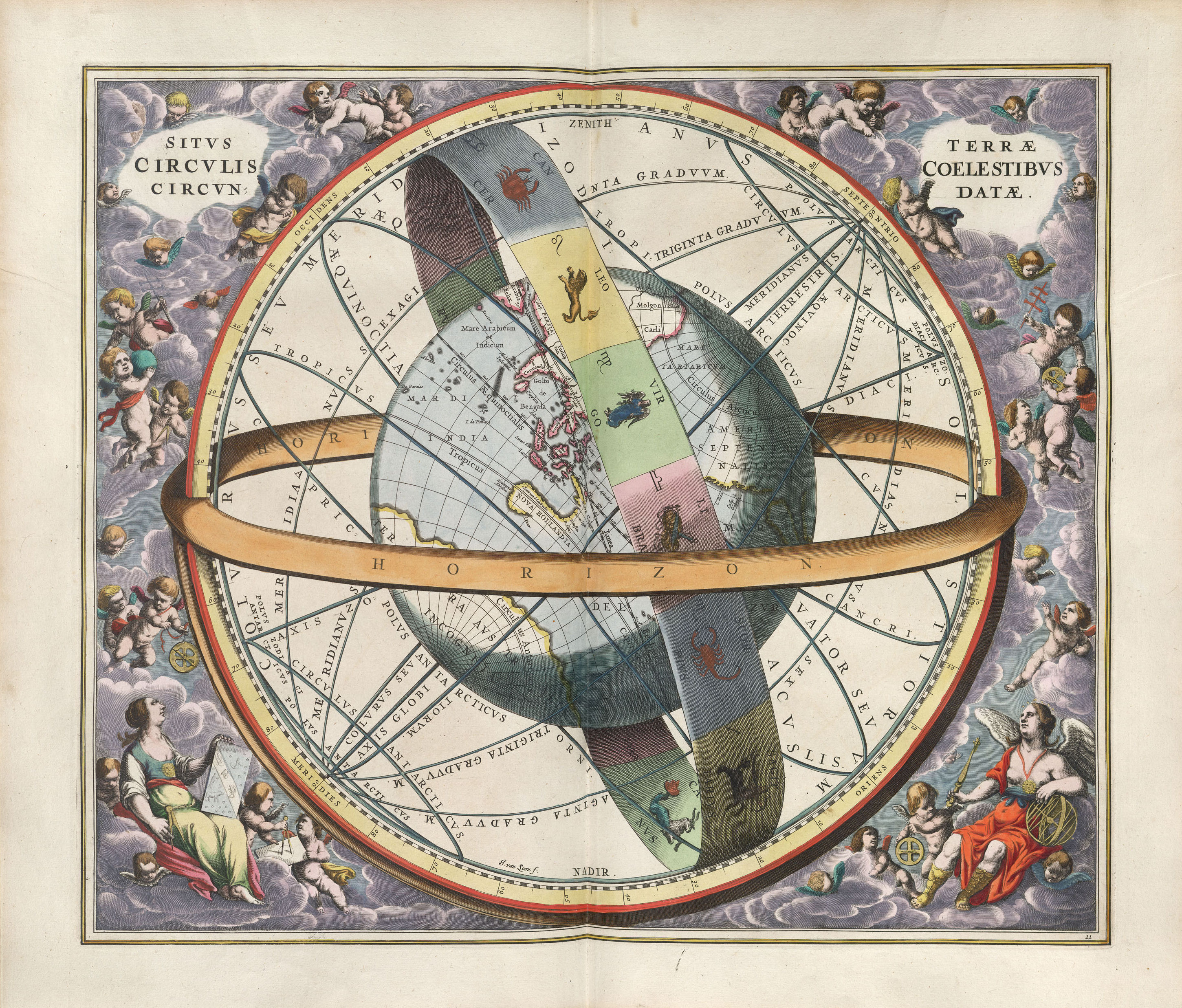
CORPORUM COELESTIUM MAGNITUDINES – The sizes of the celestial bodies [in some copies the terrestrial sphere has the continents drawn in by hand].
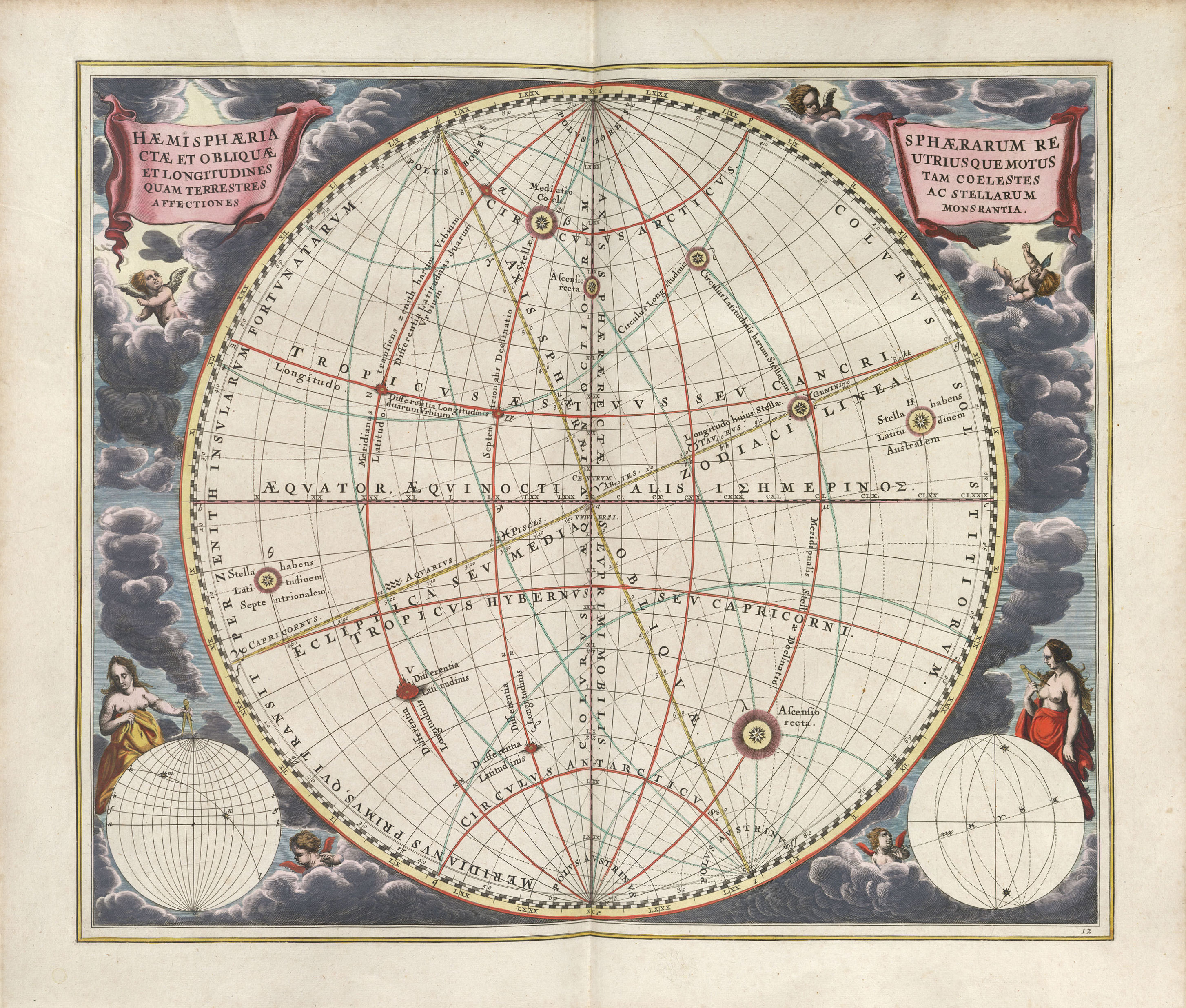
SITVS TERRÆ CIRCVLIS COELESTIBVS CIRCVNDATÆ – The location of the Earth encircled by the celestial circles.
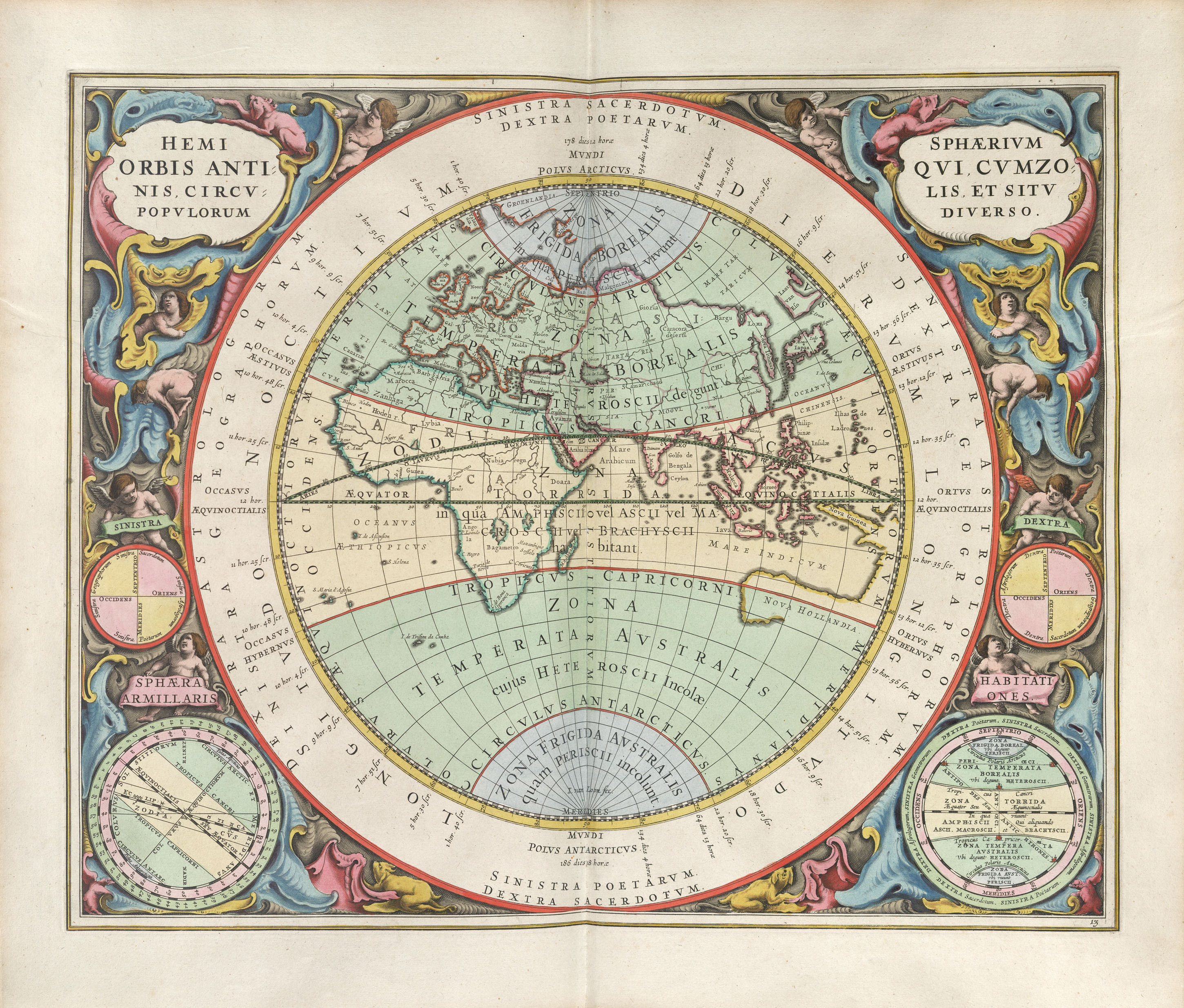
HÆMISPHÆRIA SPHÆRARUM RECTÆ ET OBLIQUÆ UTRIUSQUE MOTUS ET LONGITUDINES TAM COELESTES QUAM TERRESTRES AC STELLARUM AFFECTIONES MONS[T]RANTIA – Hemispheres displaying both the celestial and terrestrial motions and longitudes of either sphere, the upright sphere (i.e. the equatorial co-ordinate system) and the oblique sphere (i.e. the ecliptic co-ordinate system), along with the influences of the stars.
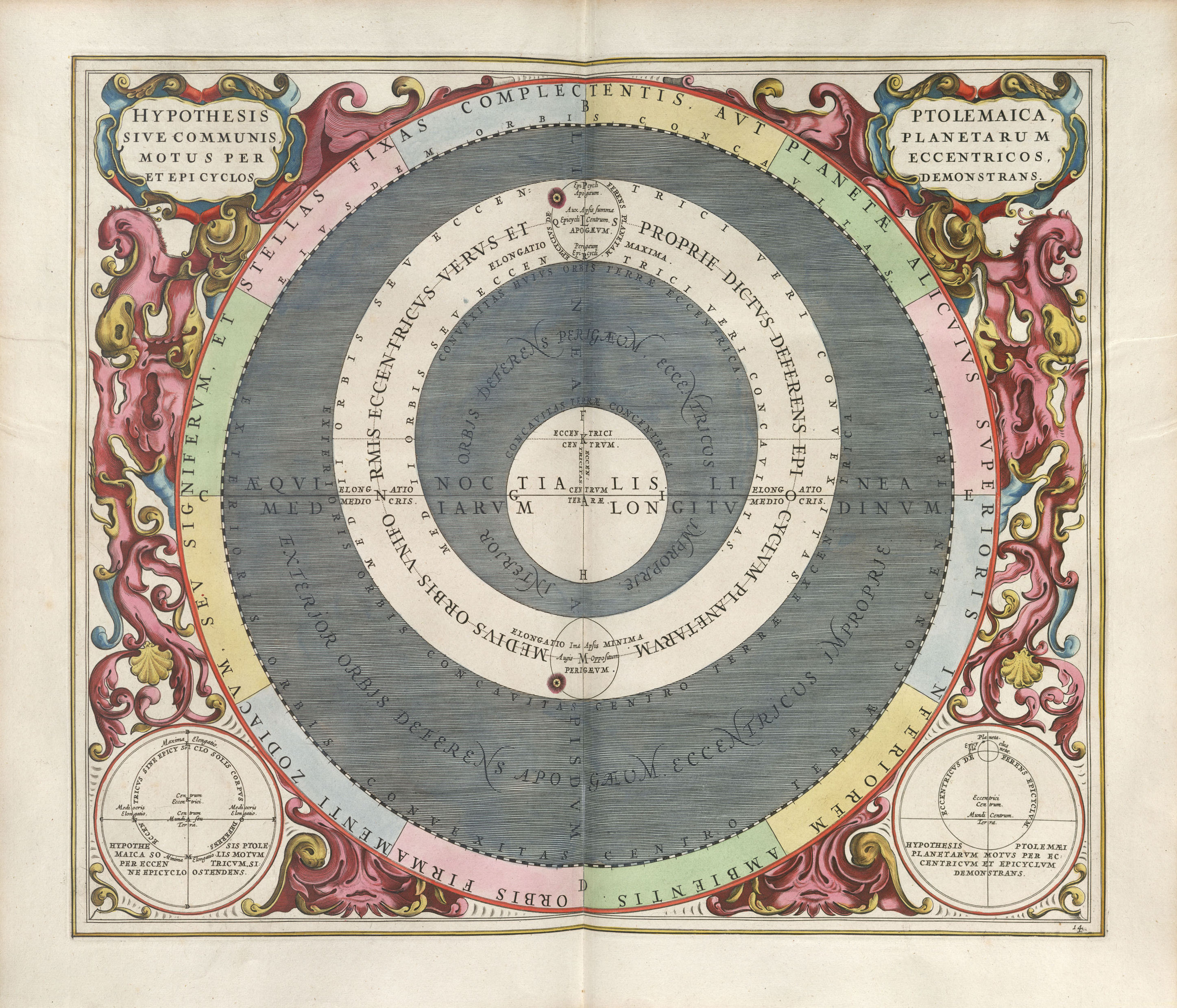
HYPOTHESIS PTOLEMAICA, SIVE COMMUNIS, PLANETARUM MOTUS PER ECCENTRICOS, ET EPICYCLOS DEMONSTRANS – The Ptolemaic or common(ly accepted) hypothesis, demonstrating the planetary motions in eccentric and epicyclical orbits.
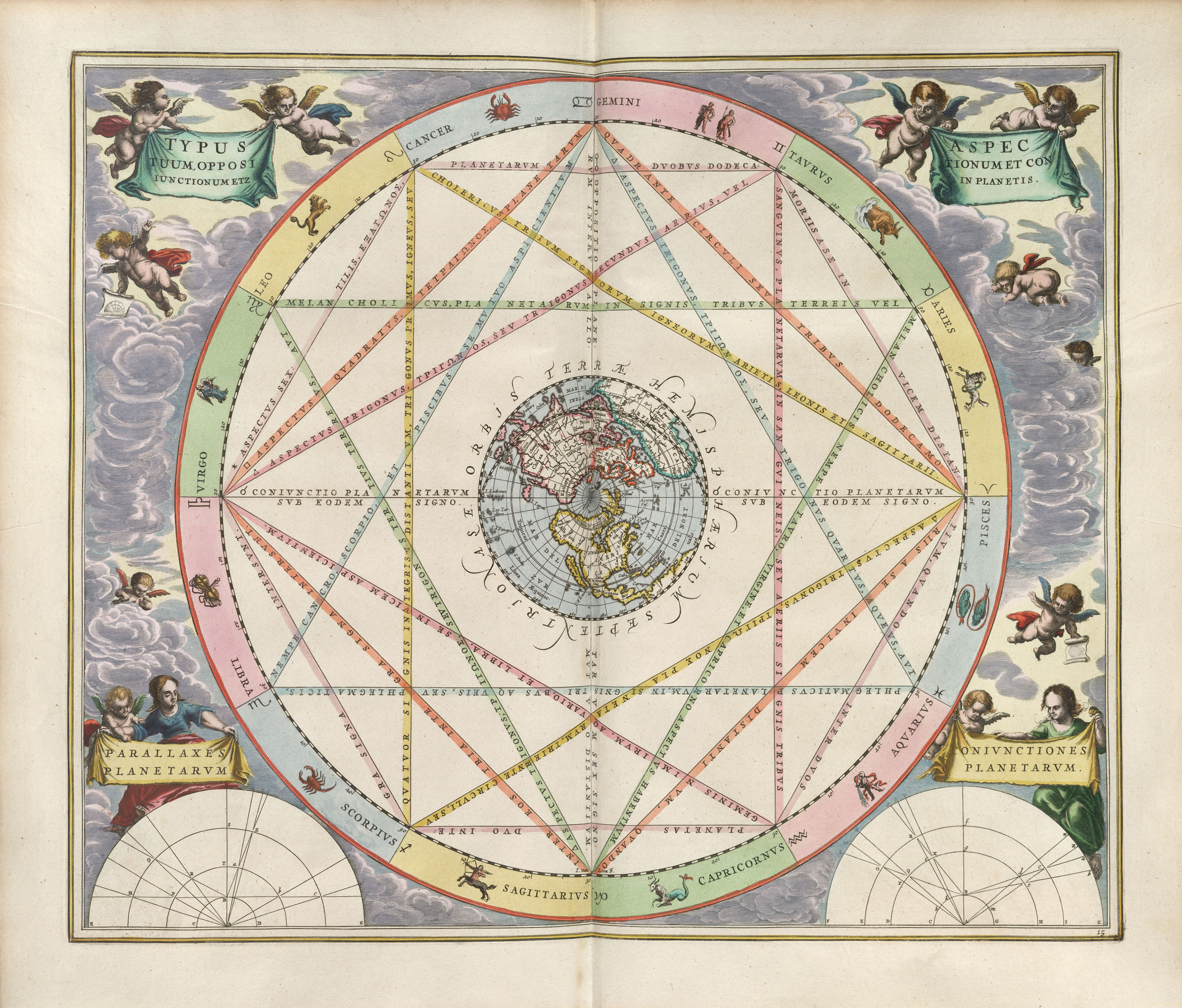
TYPUS ASPECTUUM, OPPOSITIONUM ET CONIUNCTIONUM ETZ IN PLANETIS – The (astrological) aspects, such as opposition, conjunction, etc., among the planets.
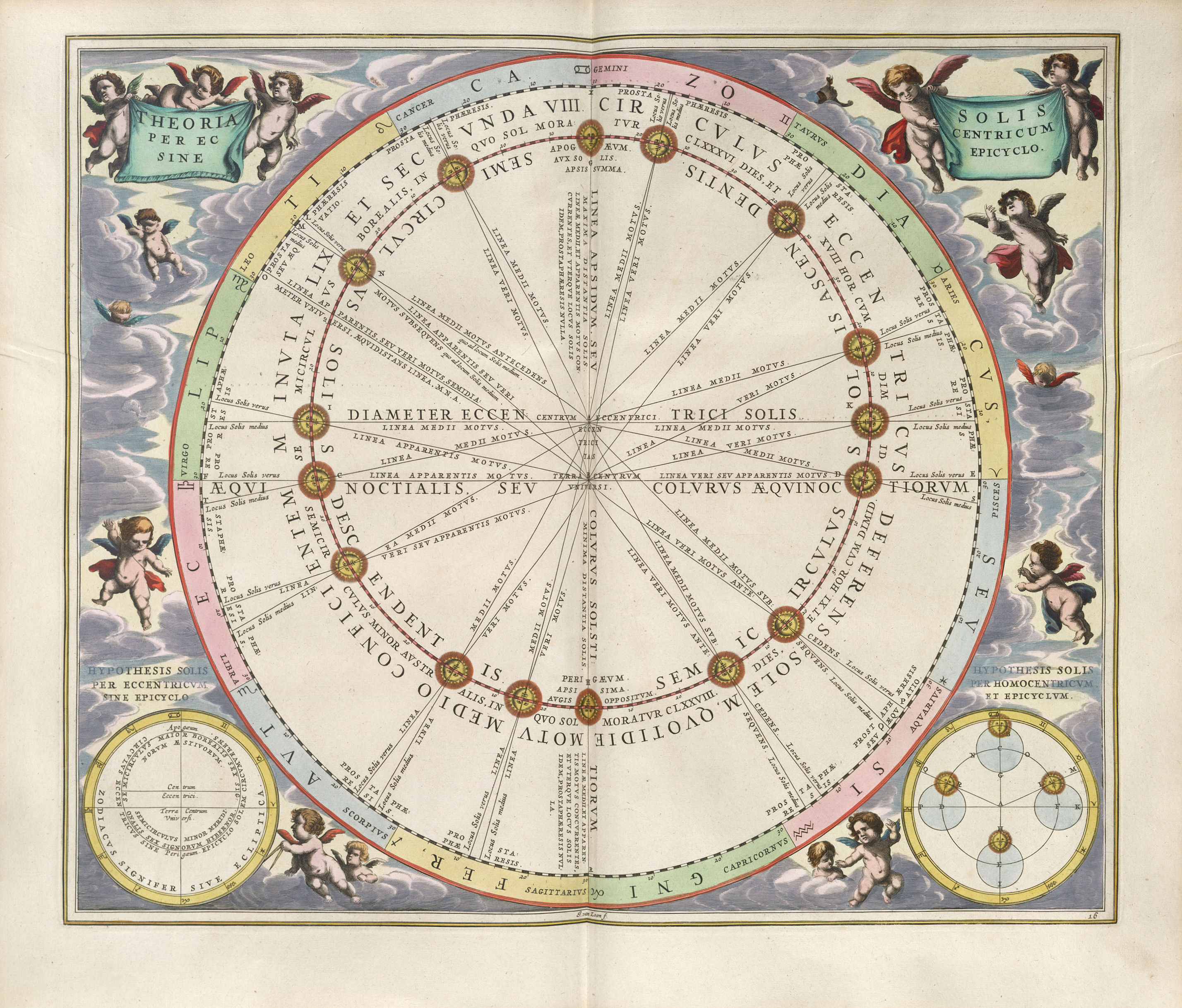
THEORIA SOLIS PER ECCENTRICUM SINE EPICYCLO – Representation of the Sun in an eccentric orbit without epicycles.
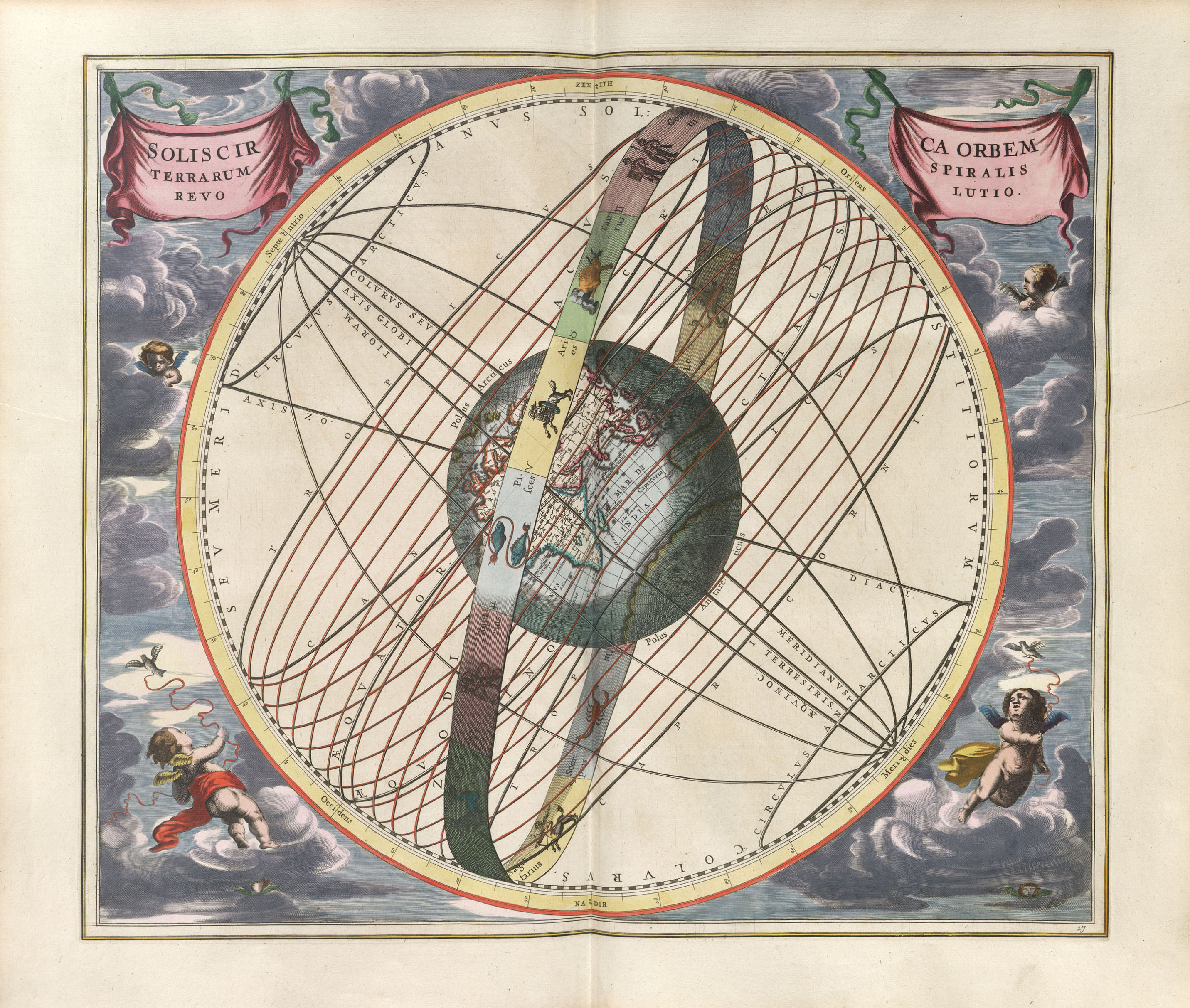
HEMISPHÆRIVM ORBIS ANTIQVI, CVM ZONIS, CIRCVLIS, ET SITV POPVLORUM DIVERSO – The hemisphere of the Old World, with its (climate) zones, (meridian) circles and the dwelling places of the distinctive races.
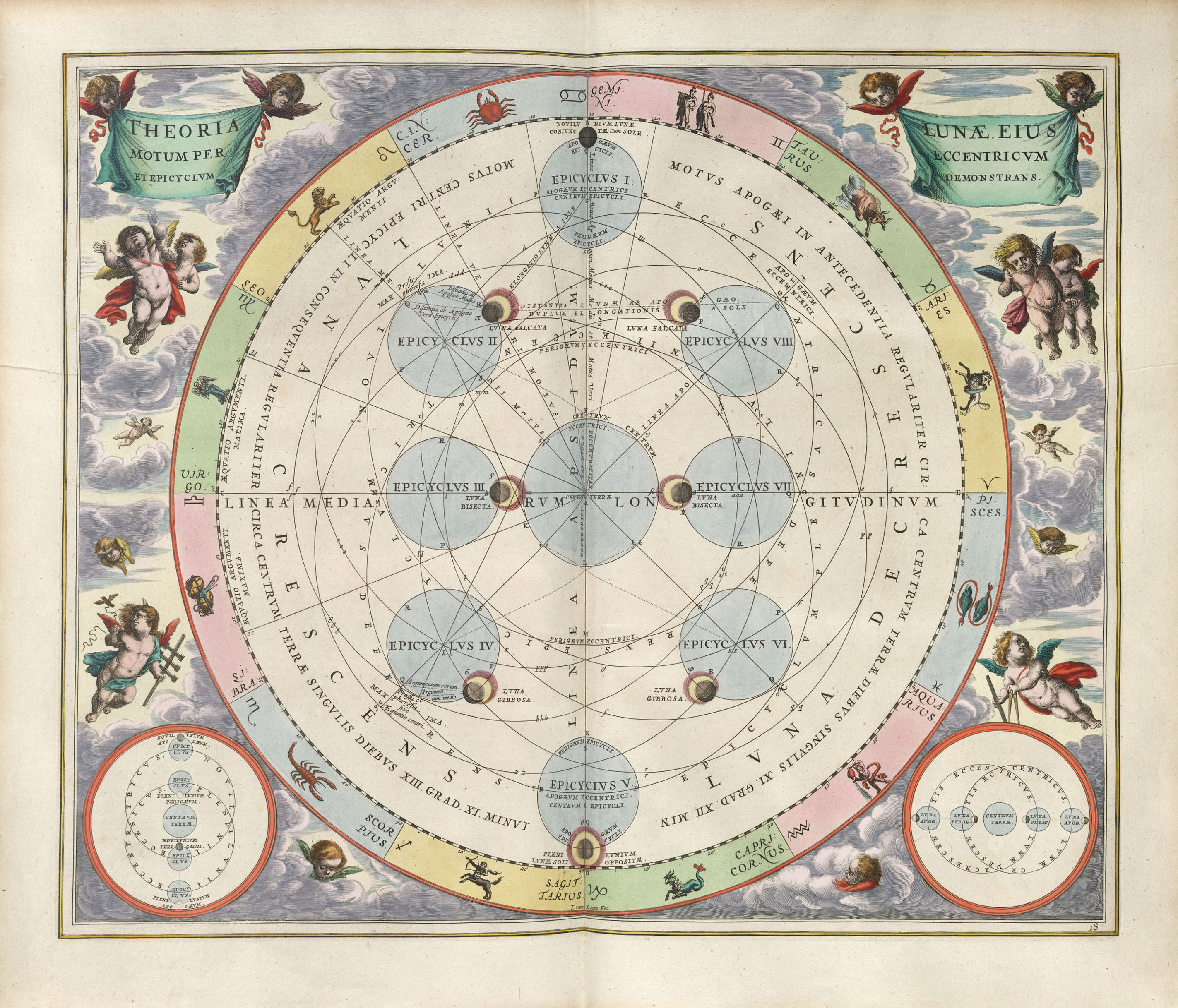
SOLIS CIRCA ORBEM TERRARUM SPIRALIS REVOLUTIO – The (apparent) spiral revolution of the Sun around the Earth.
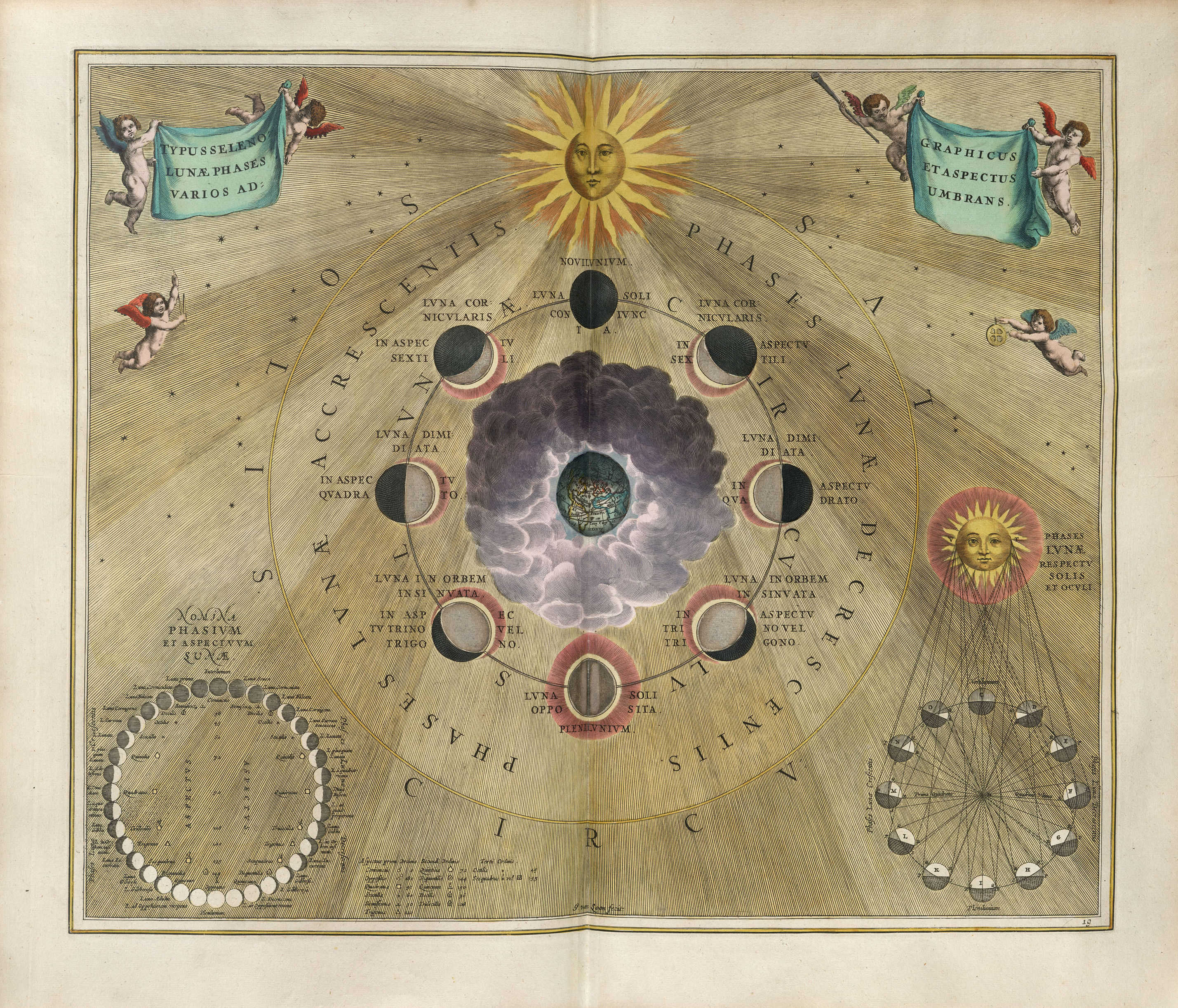
THEORIA LUNÆ, EIUS MOTUM PER ECCENTRICVM ET EPICYCLVM DEMONSTRANS – Representation of the Moon showing its motion in an eccentric orbit with epicycles.
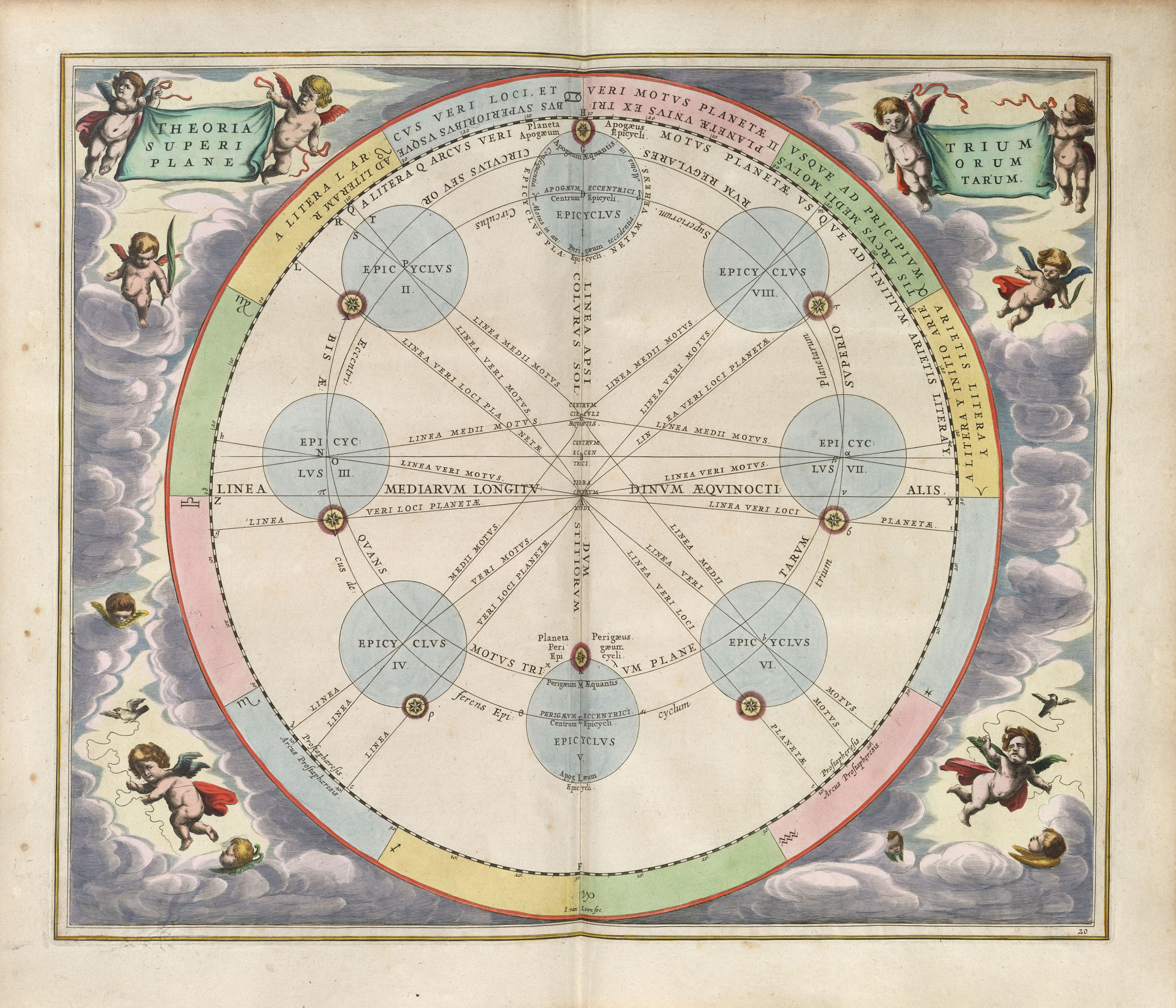
TYPUS SELENOGRAPHICUS LUNÆ PHASES ET ASPECTUS VARIOS ADUMBRANS [some copies from the 1660 edition have the nonsensical reading ‘… OS ADVARIUMBRANS’] – Selenographic diagram depicting the varying phases and appearances of the Moon by (means of) shading.

THEORIA TRIUM SUPERIORUM PLANETARUM – Representation (of the motions) of the three superior planets (Mars, Jupiter & Saturn).
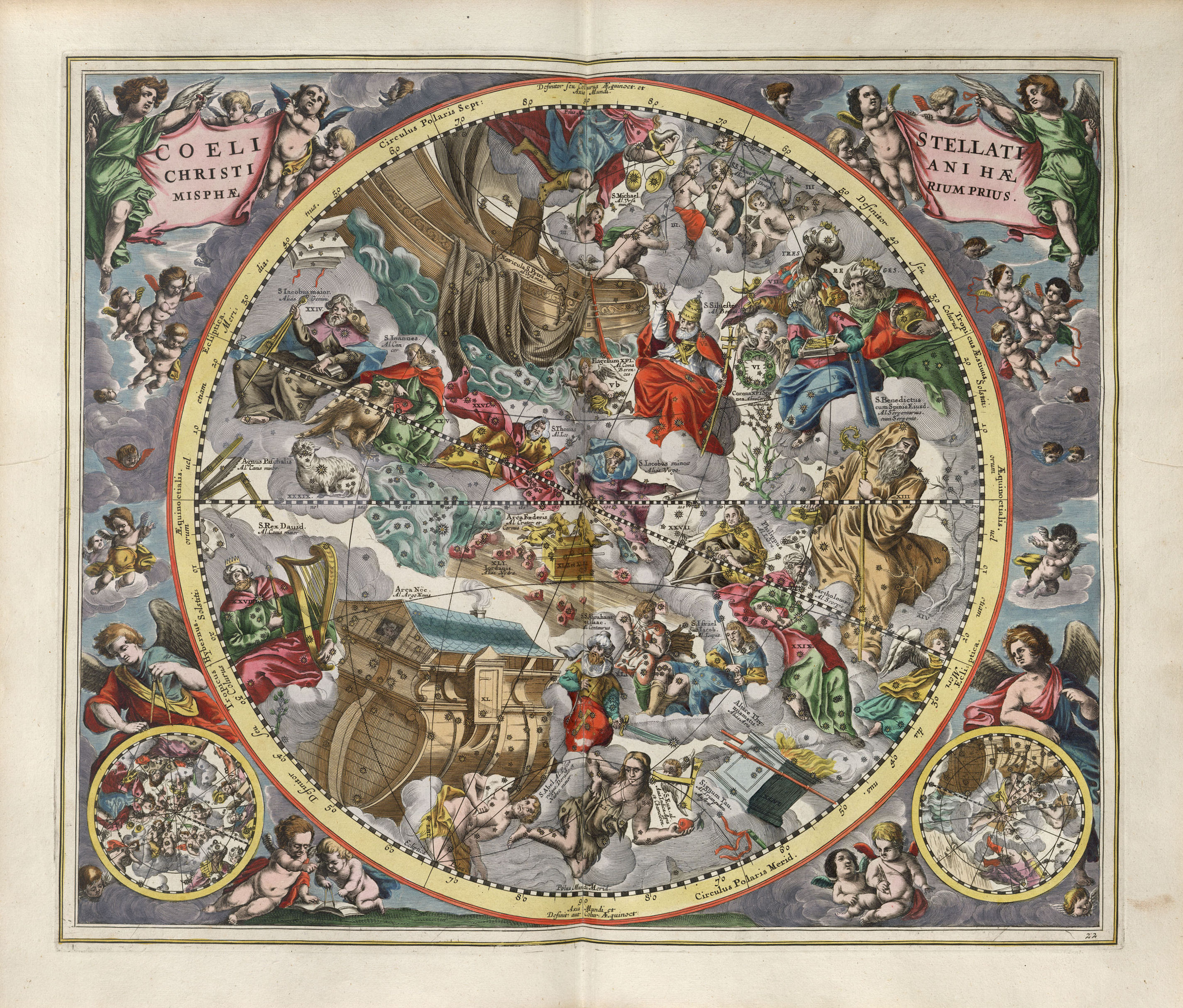
THEORIA VENERIS ET MERCURII – Representation (of the motions) of Venus and Mercury.
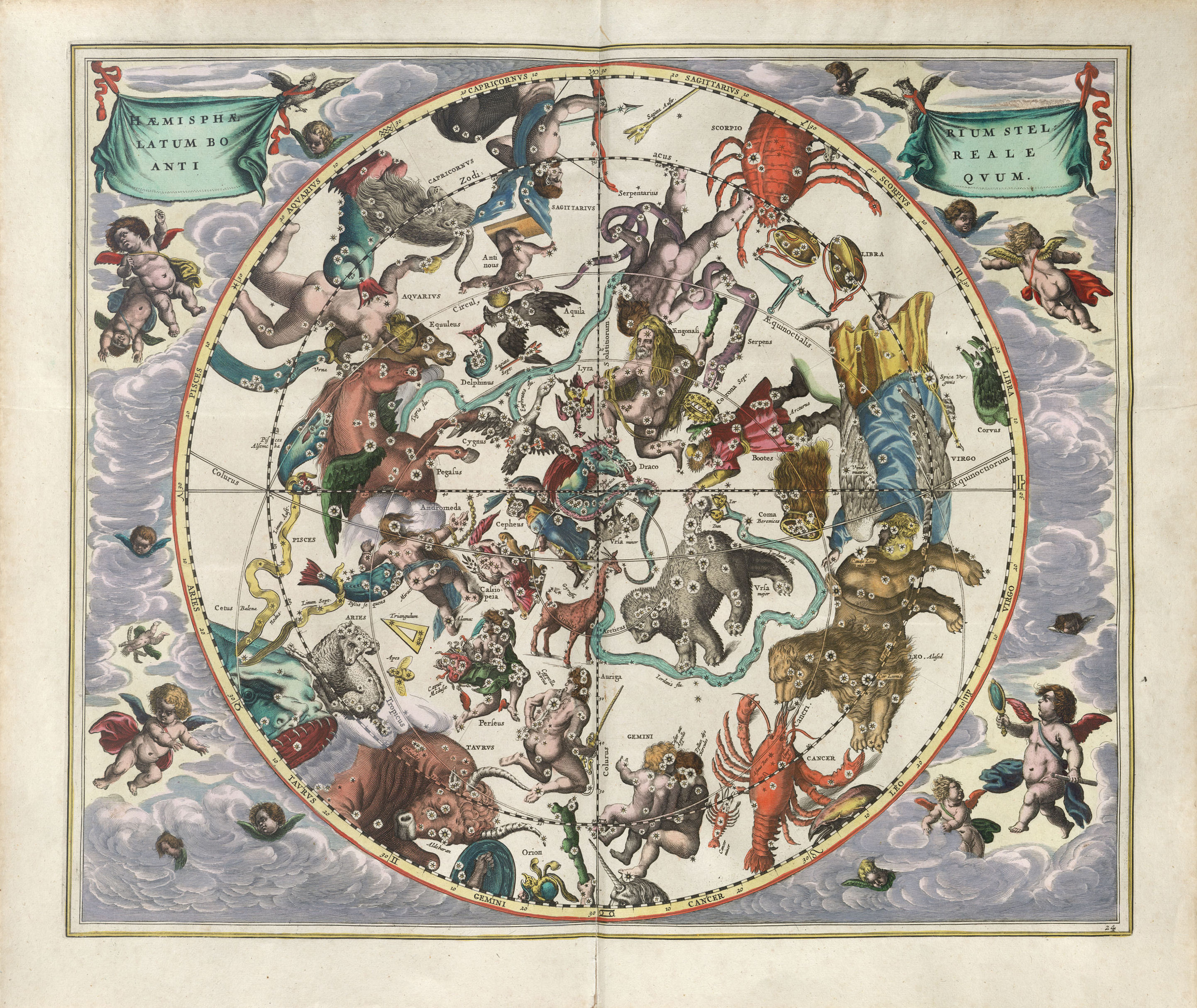
COELI STELLATI CHRISTIANI HÆMISPHÆRIUM POSTERIUS – Second hemisphere with the Christianized firmament.
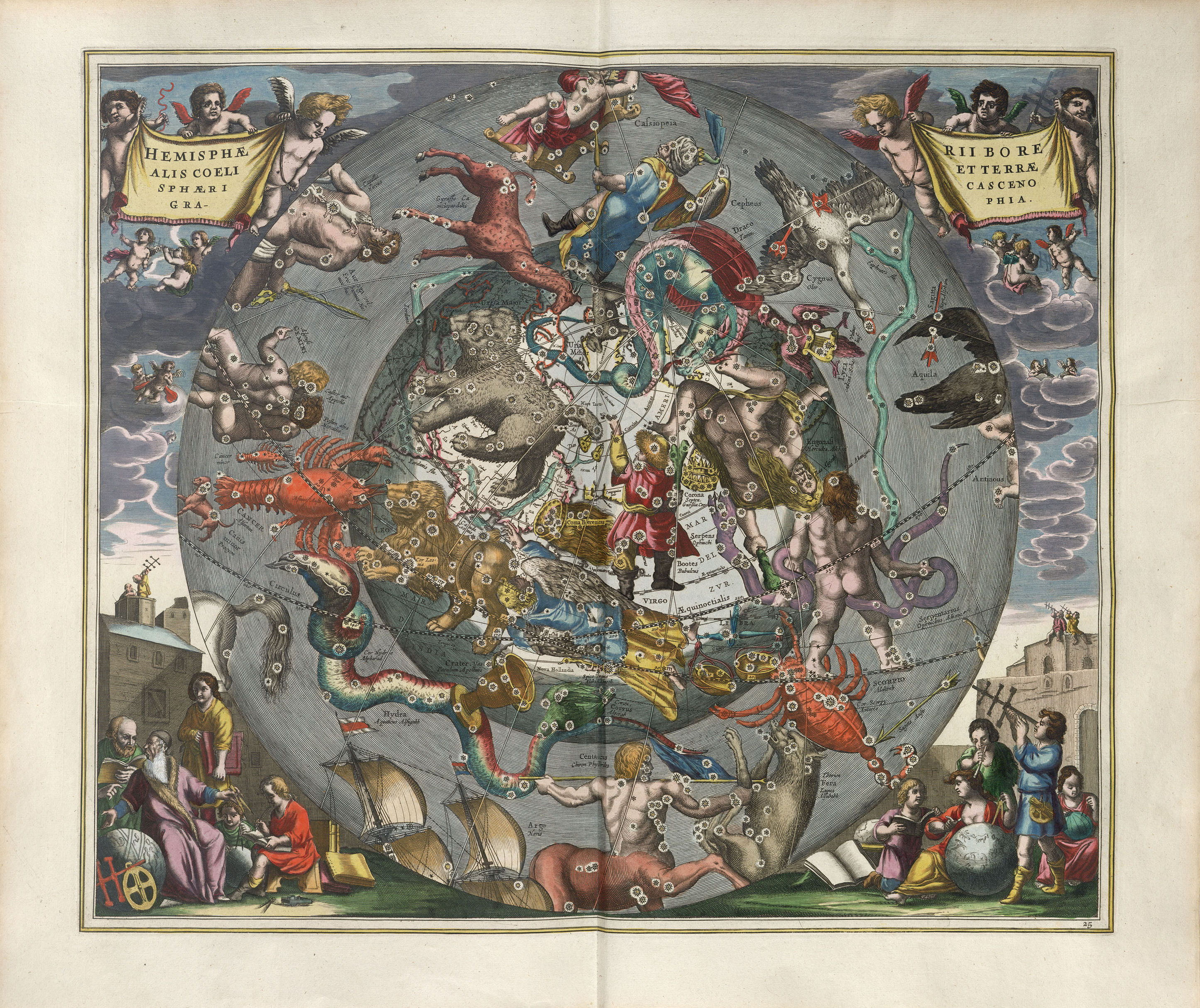
HÆMISPHÆRIUM STELLATUM BOREALE ANTIQVUM – The northern stellar hemisphere of antiquity.
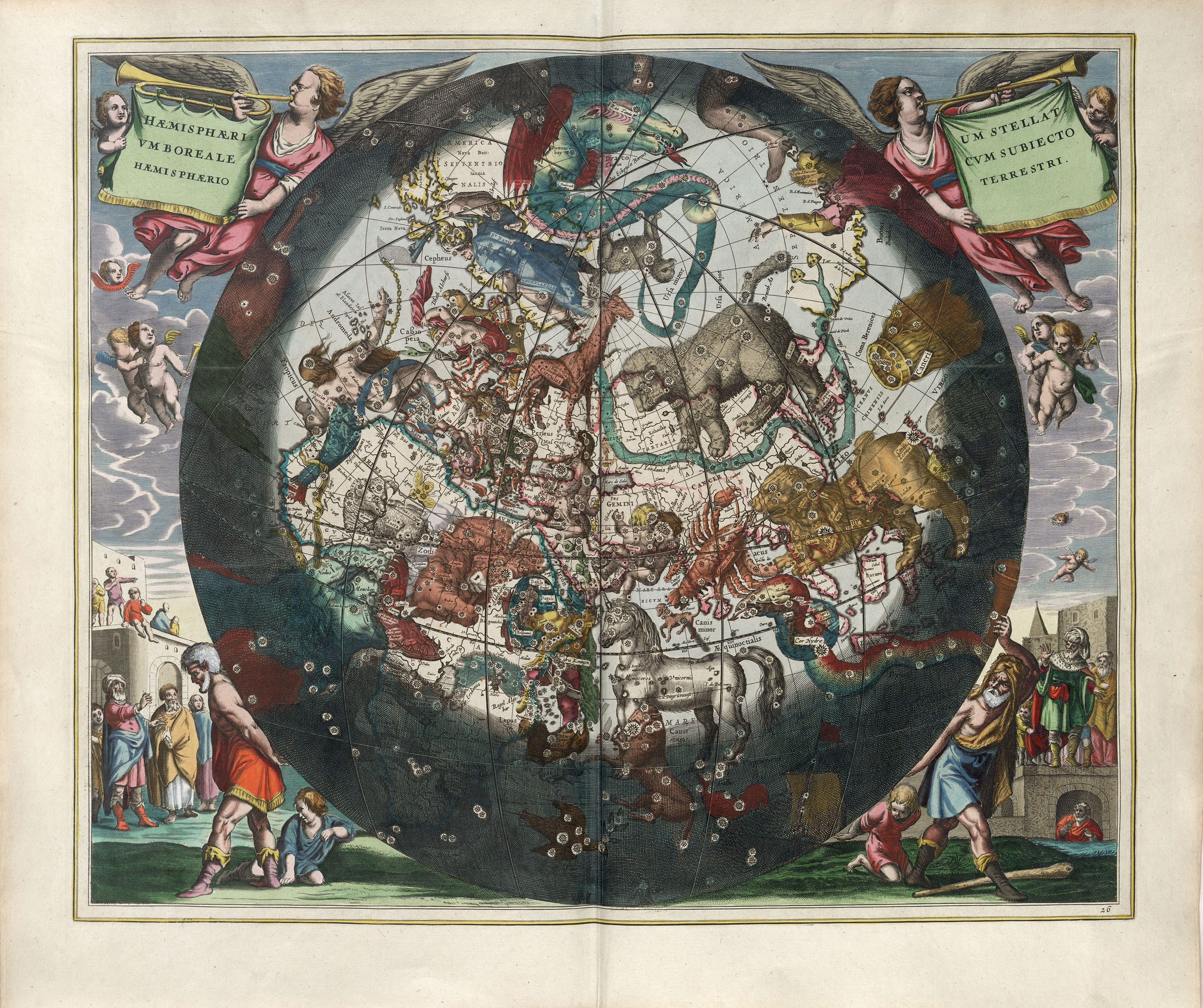
HEMISPHÆRII BOREALIS COELI ET TERRÆ SPHÆRICA SCENOGRAPHIA – Spherical scenography of both the celestial and terrestrial northern hemispheres.
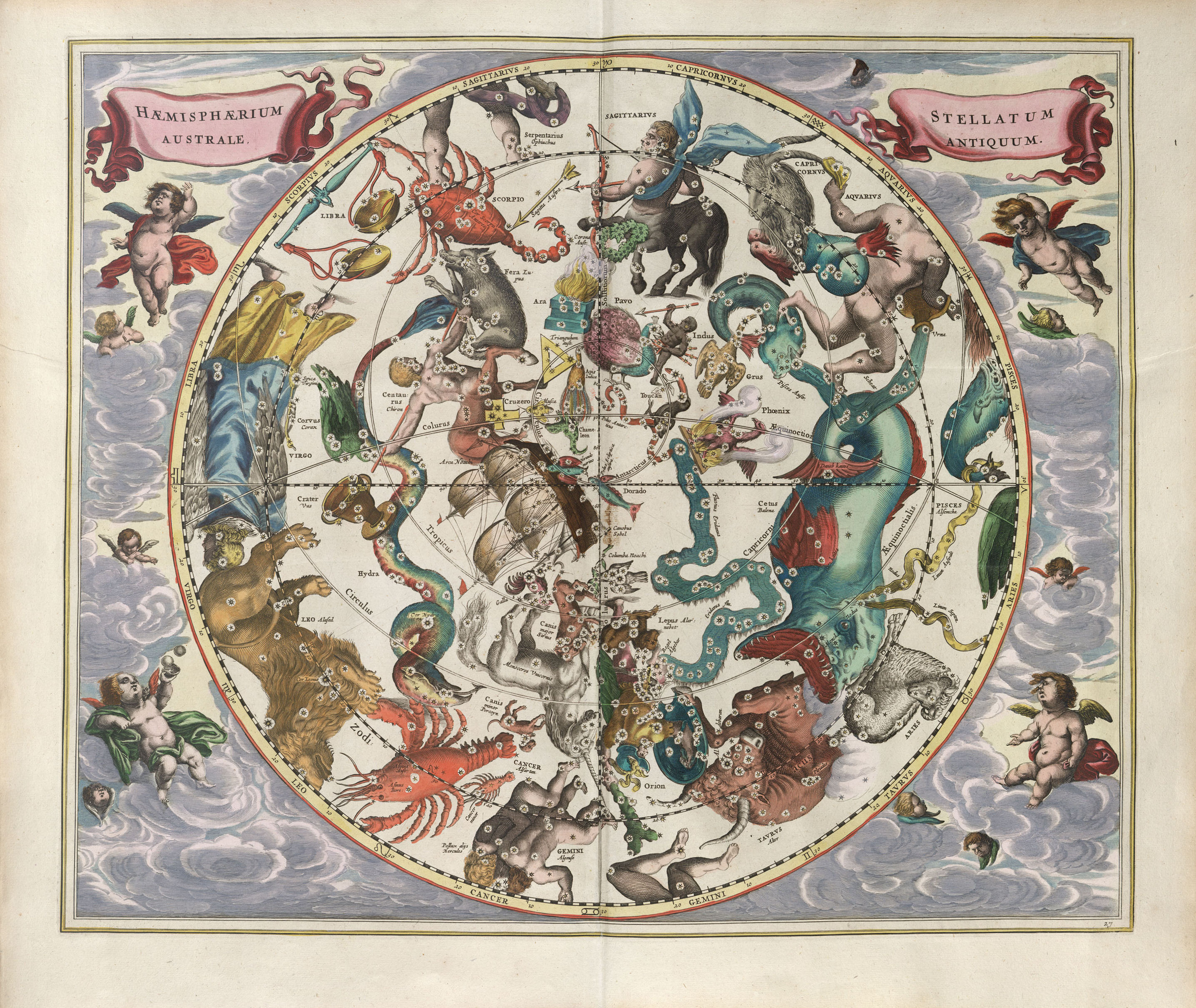
HÆMISPHÆRIUM STELLATVM BOREALE CVM SUBIECTO HÆMISPHÆRIO TERRESTRI – The northern stellar hemisphere, with the terrestrial hemisphere lying underneath.
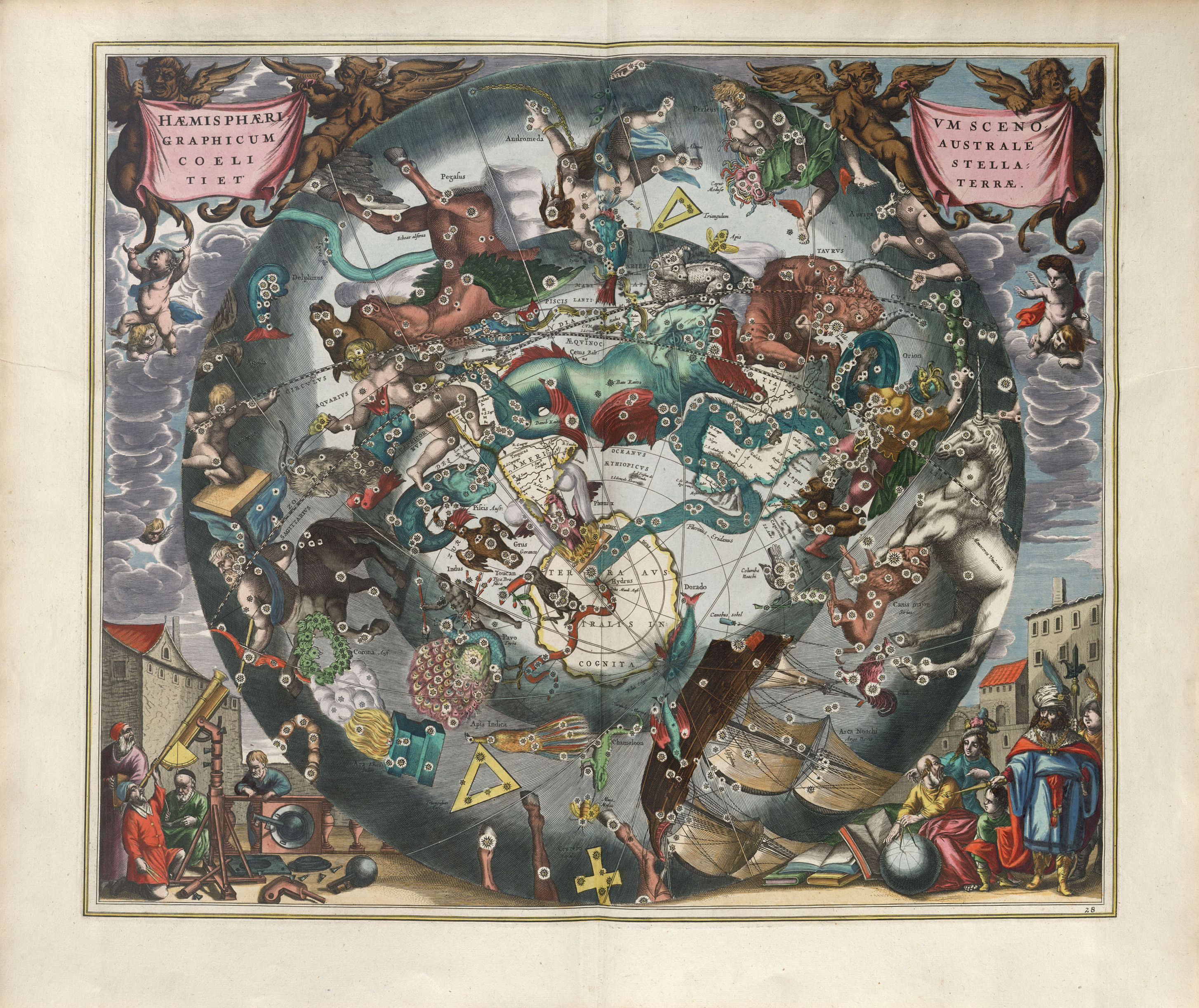
HÆMISPHÆRIUM STELLATUM AUSTRALE ANTIQUUM – The southern stellar hemisphere of antiquity.
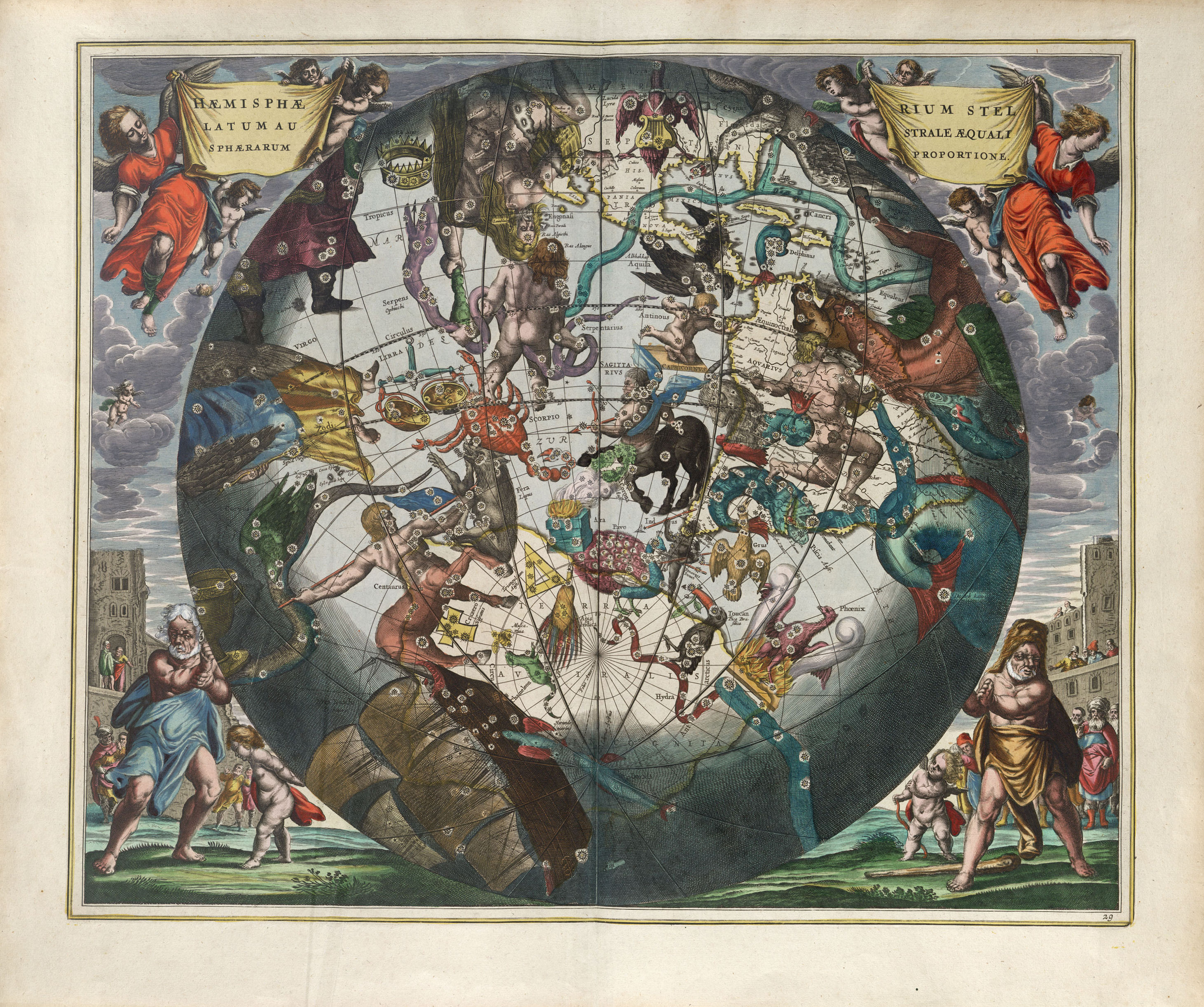
HÆMISPHÆRIVM SCENOGRAPHICUM AUSTRALE COELI STELLATI ET TERRÆ – The southern hemisphere of both the starry vault and the Earth, shown scenographically.

